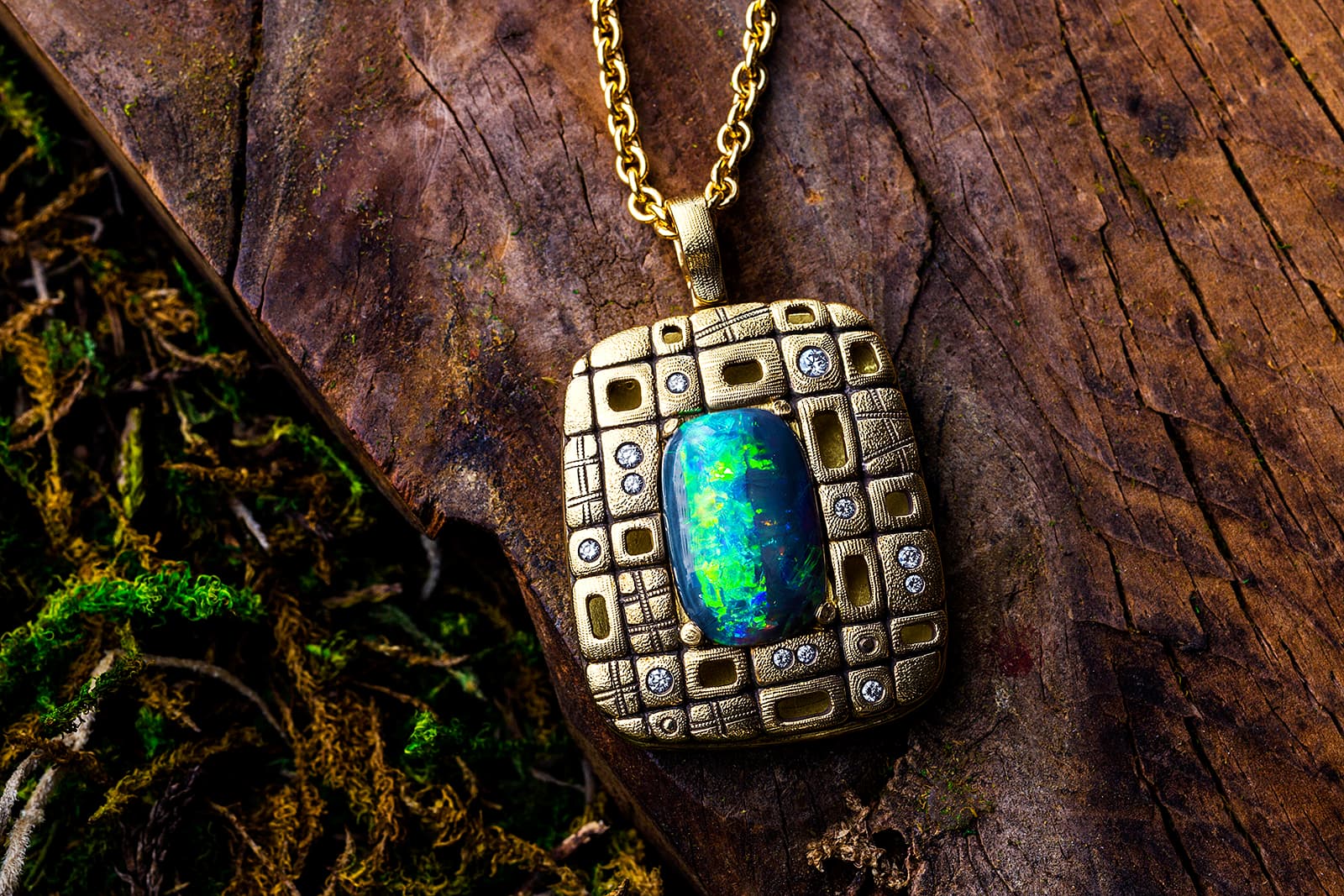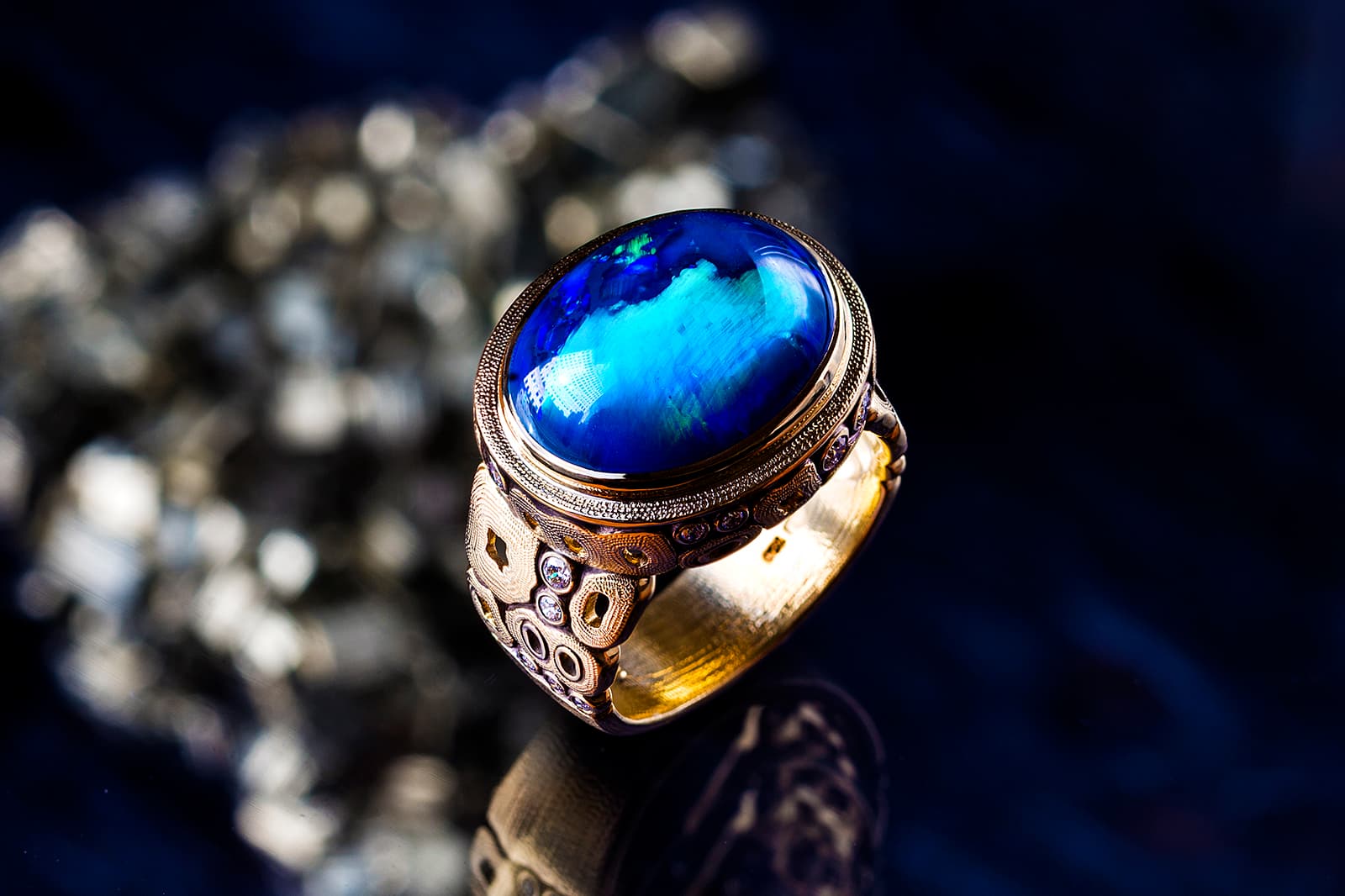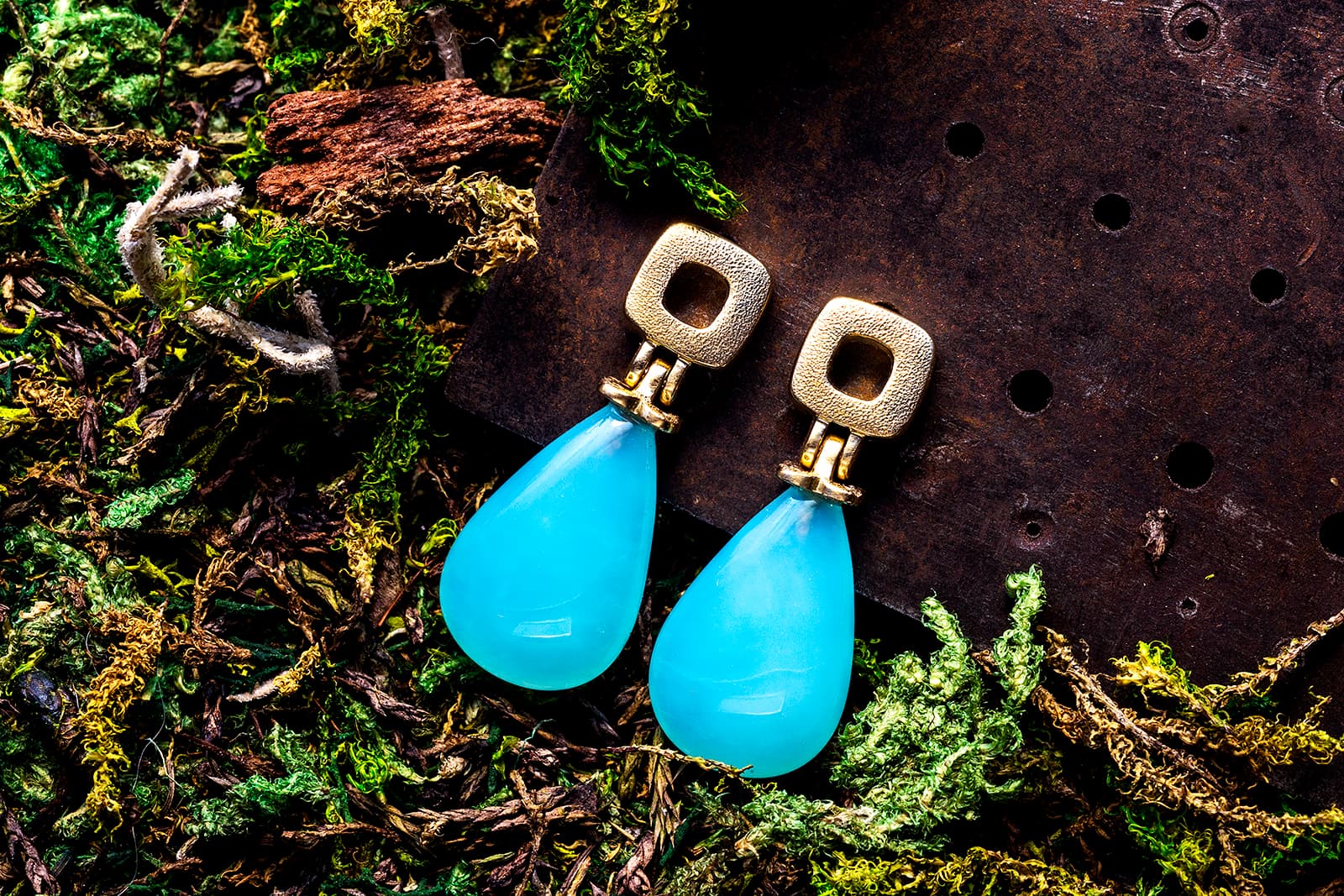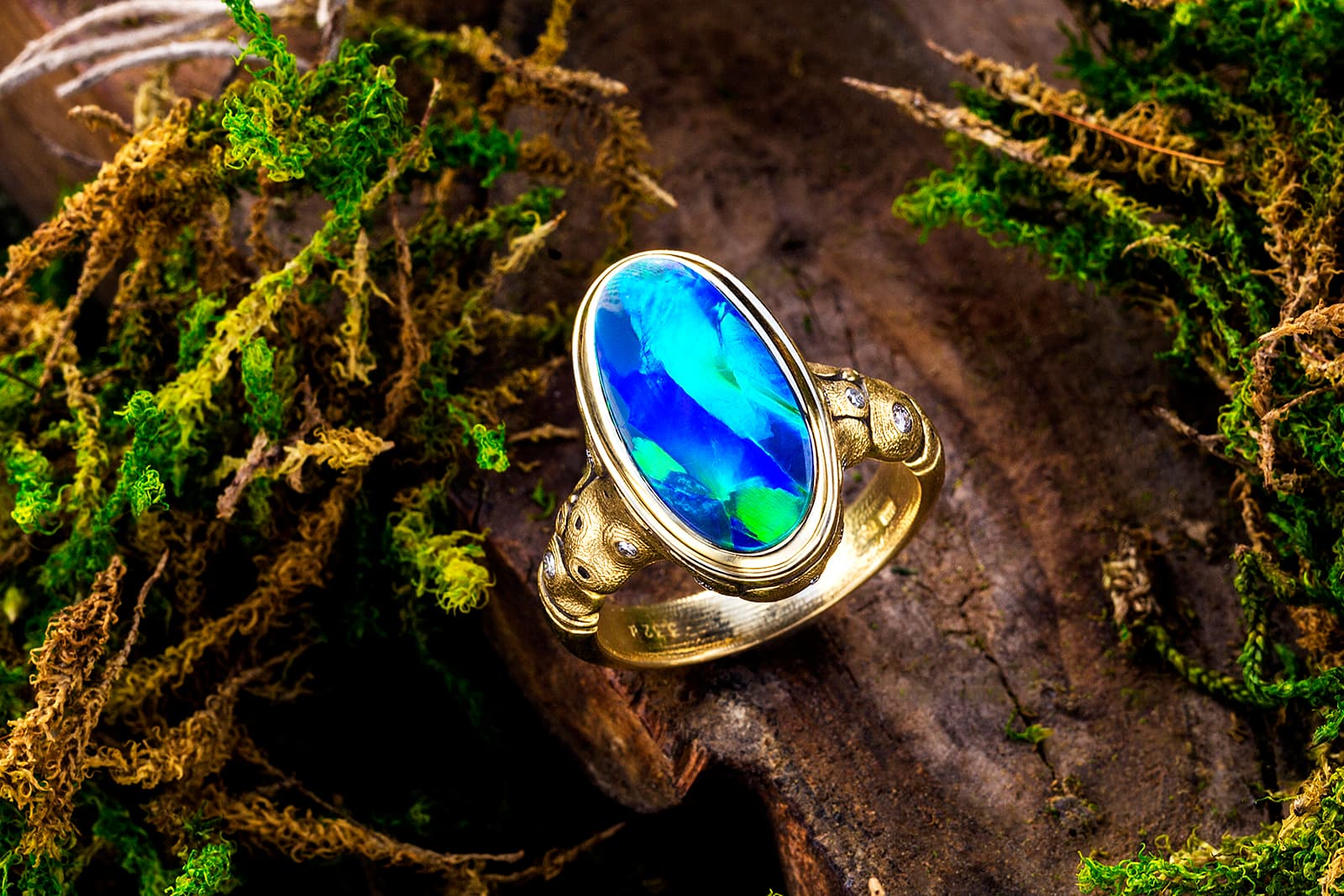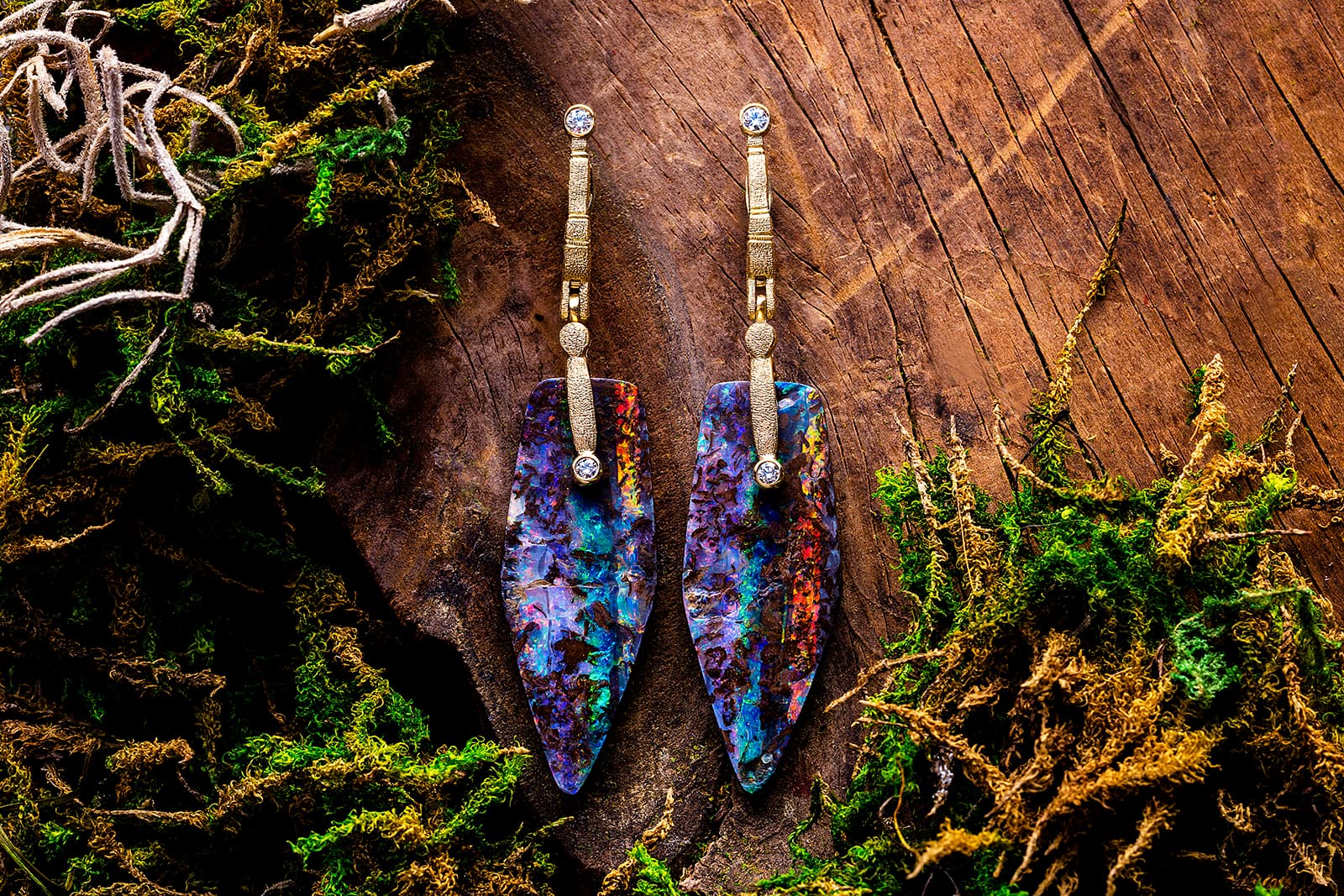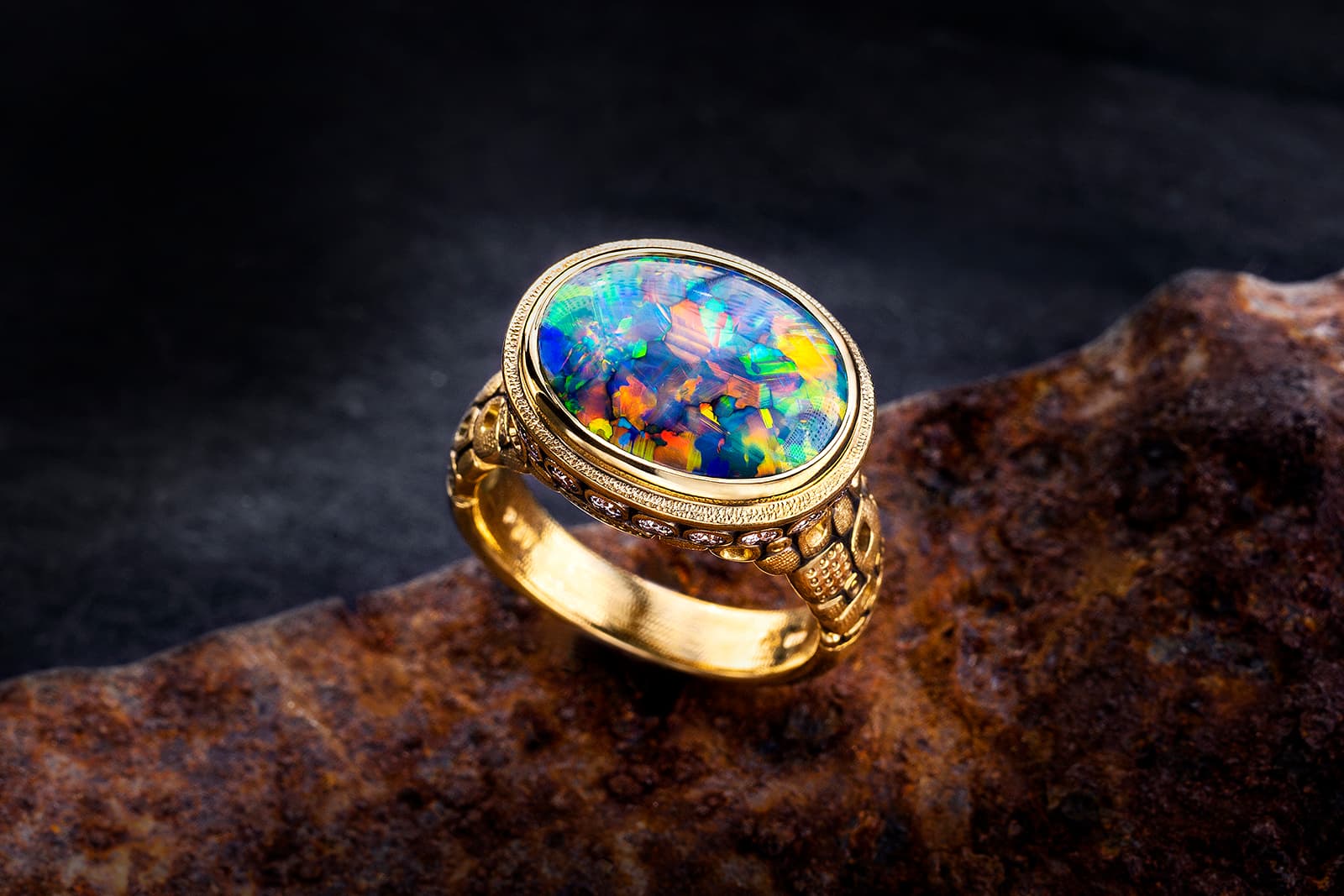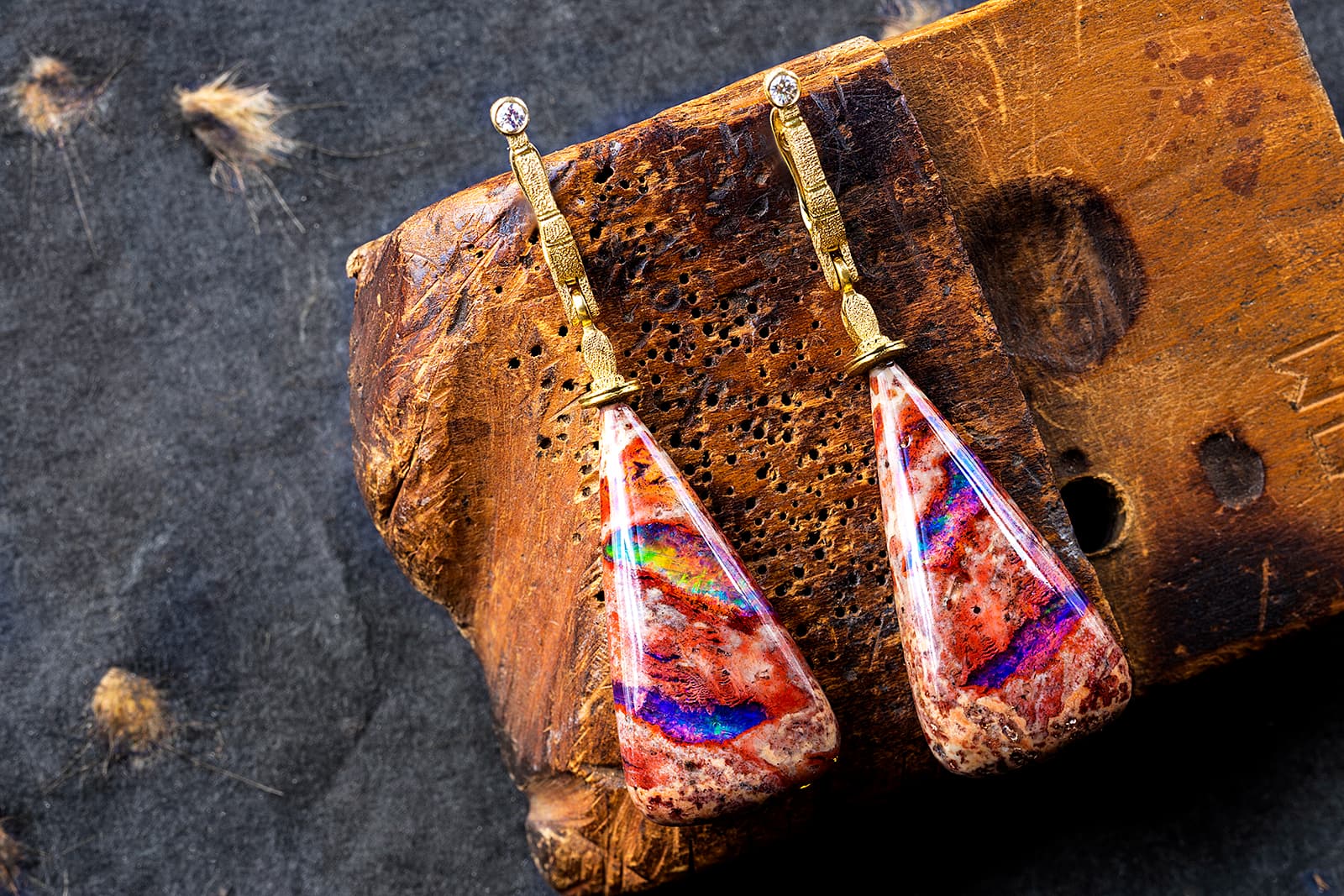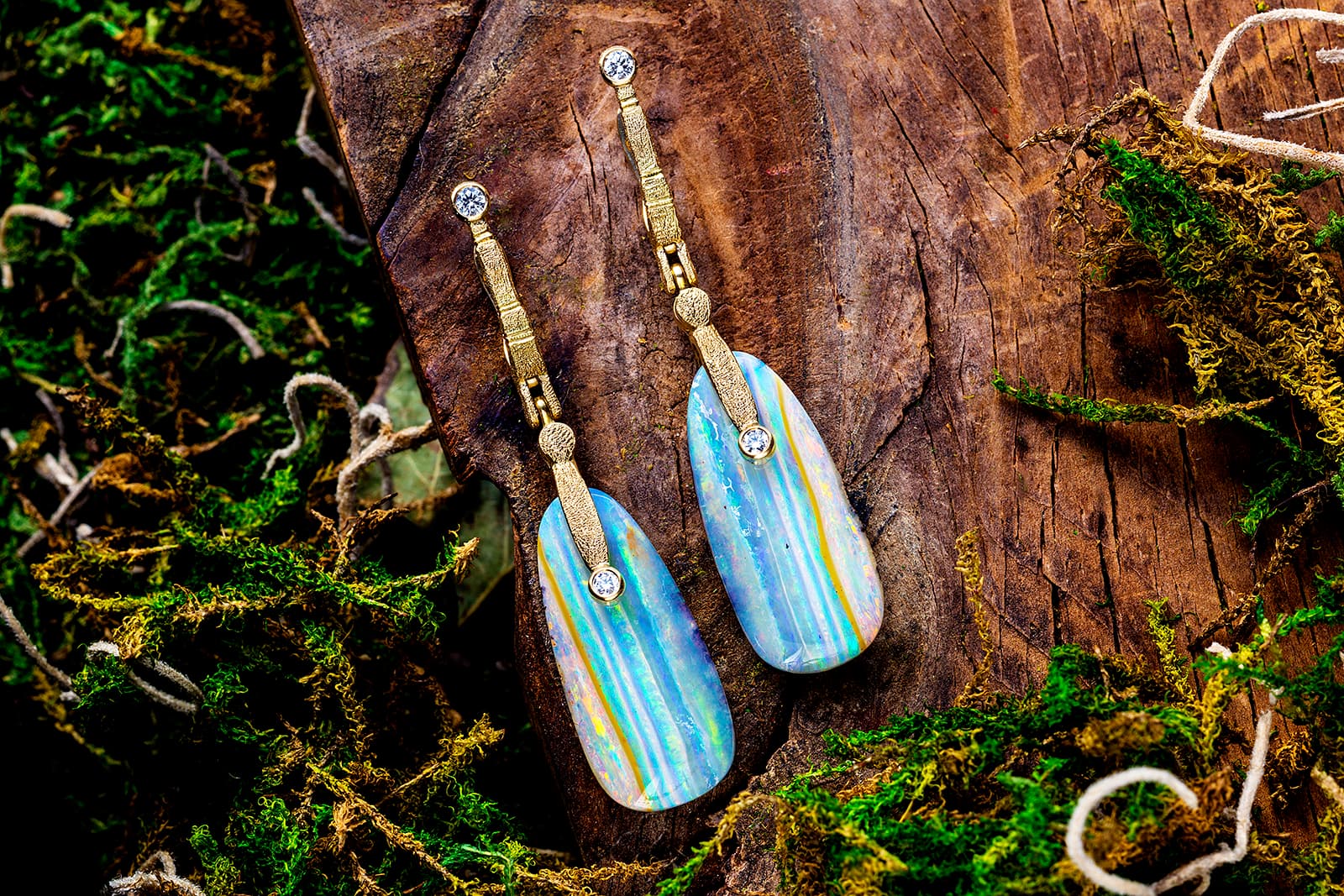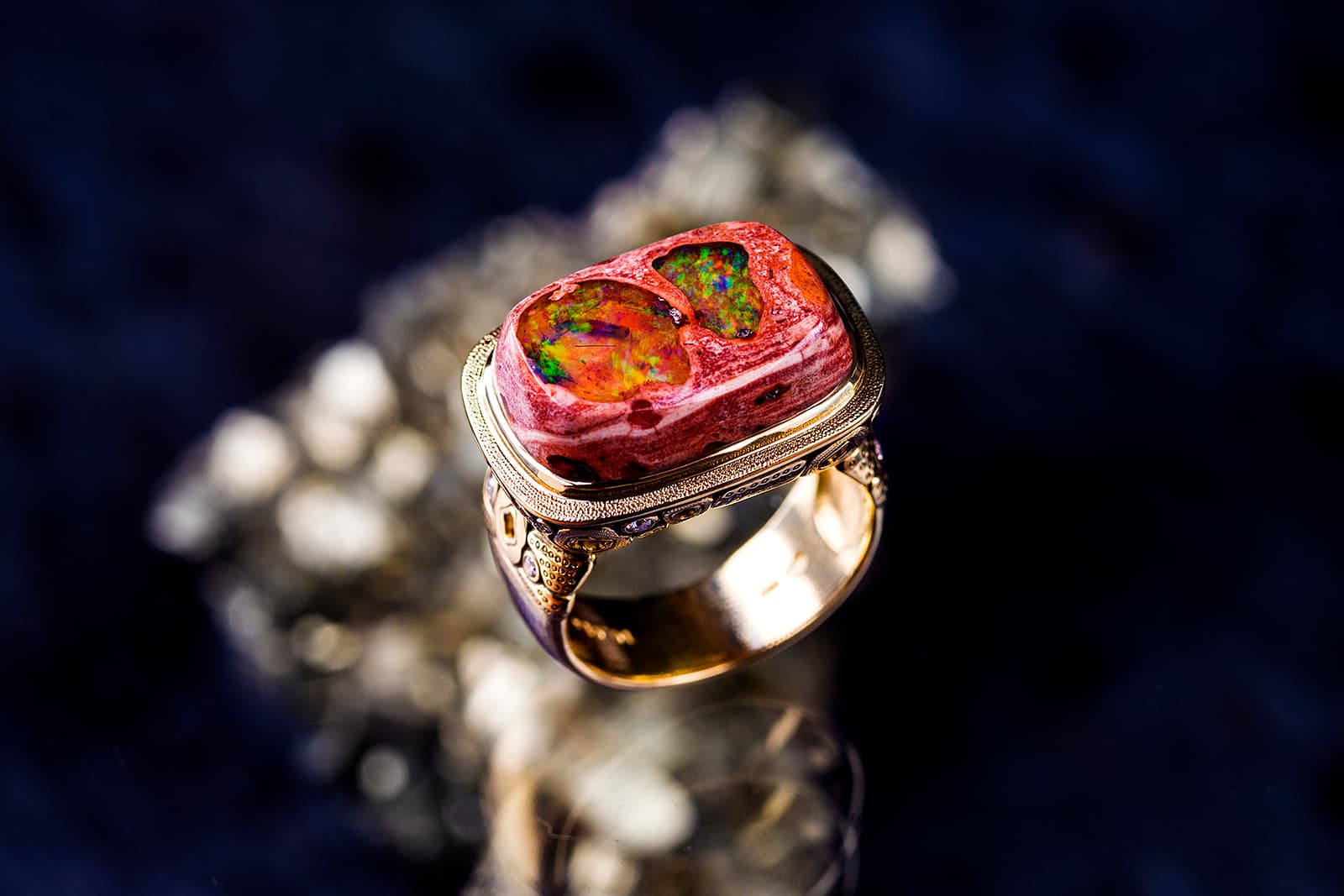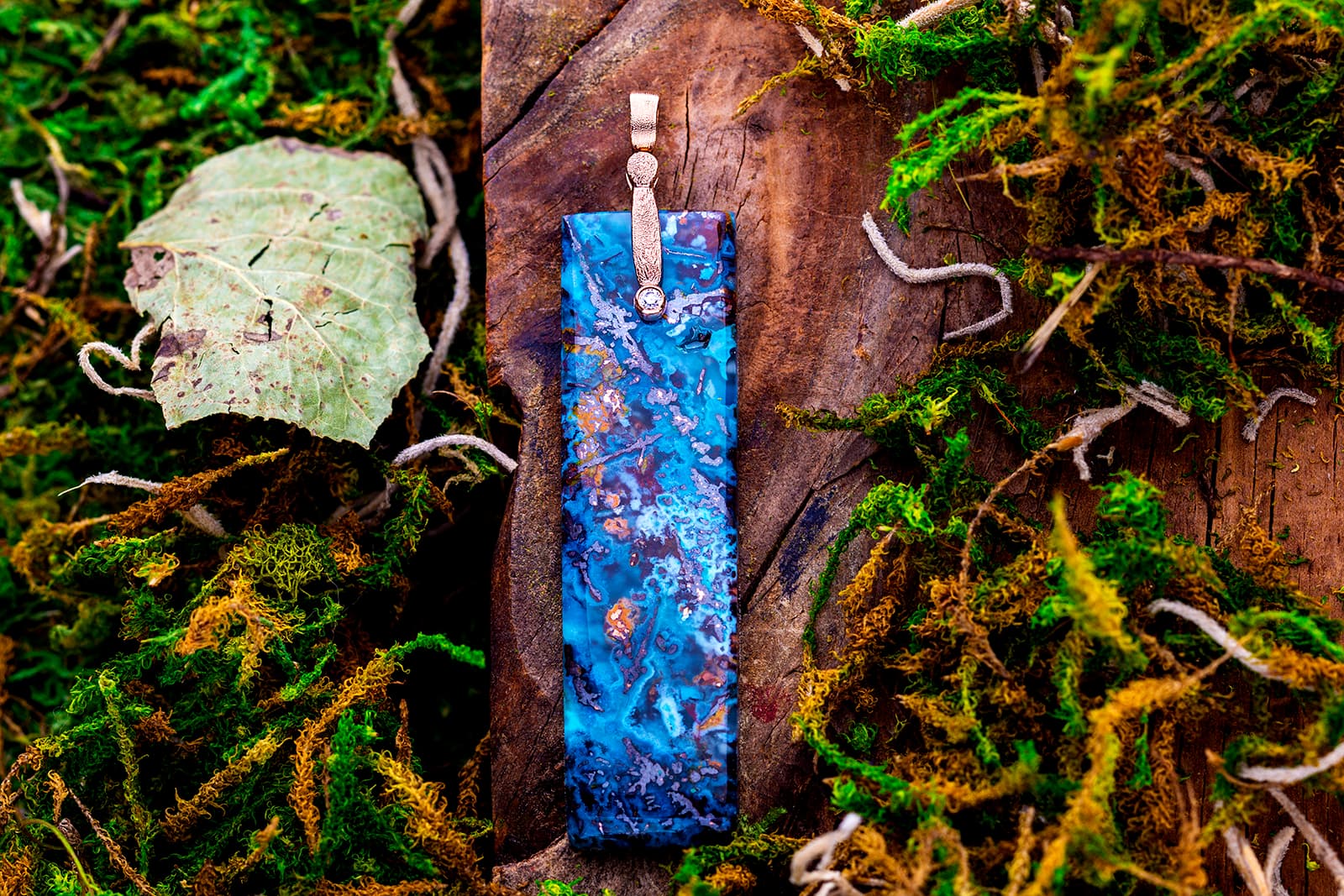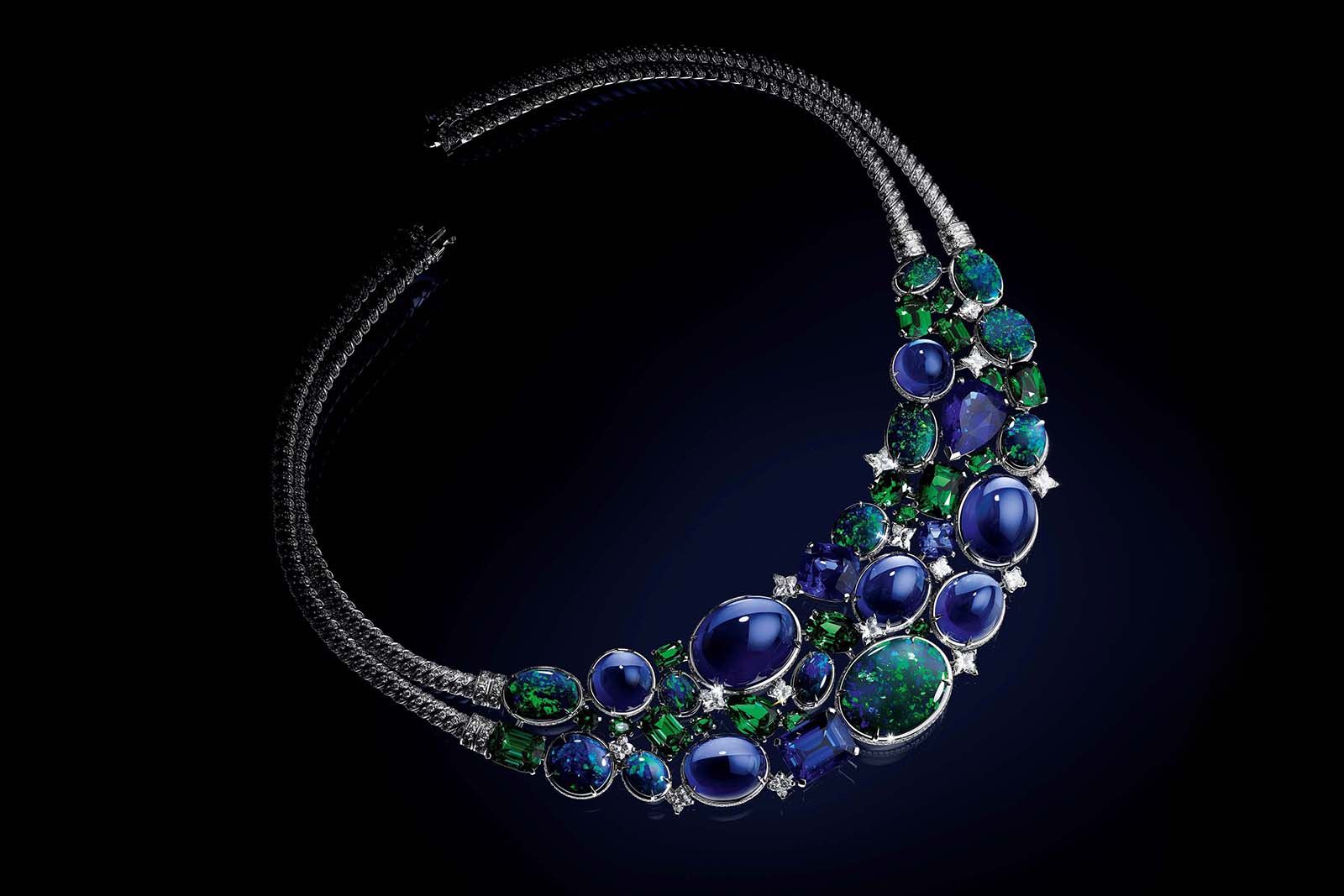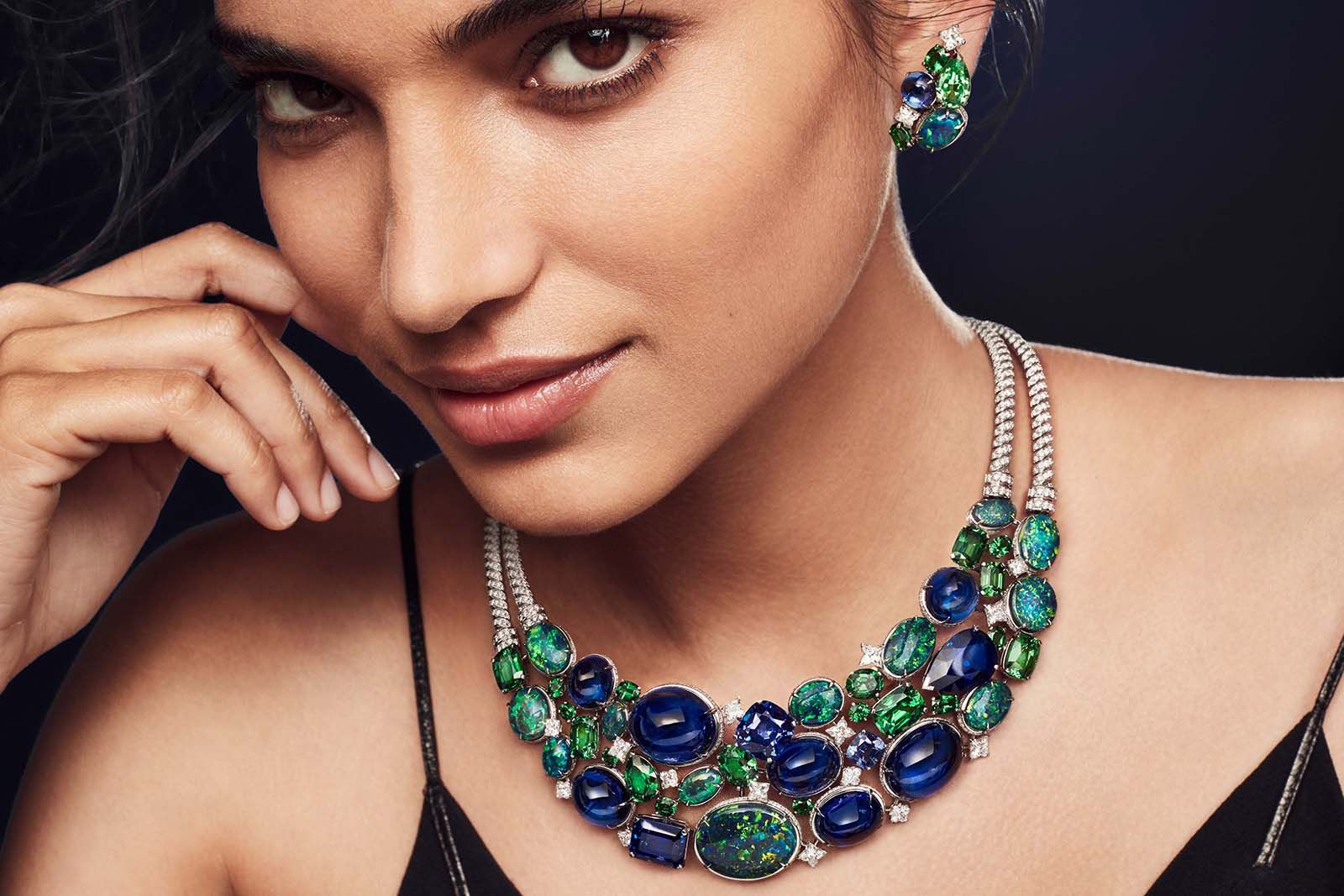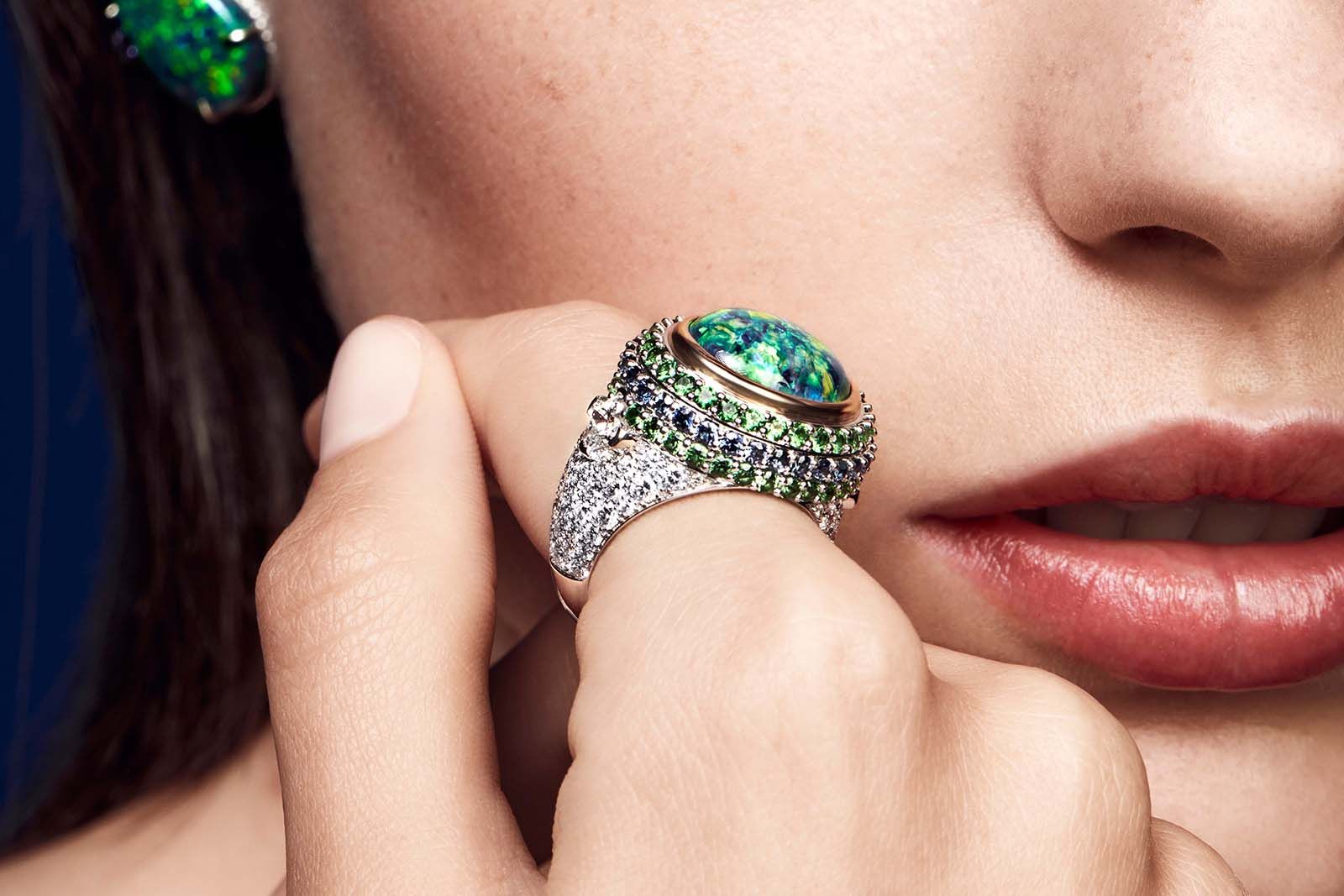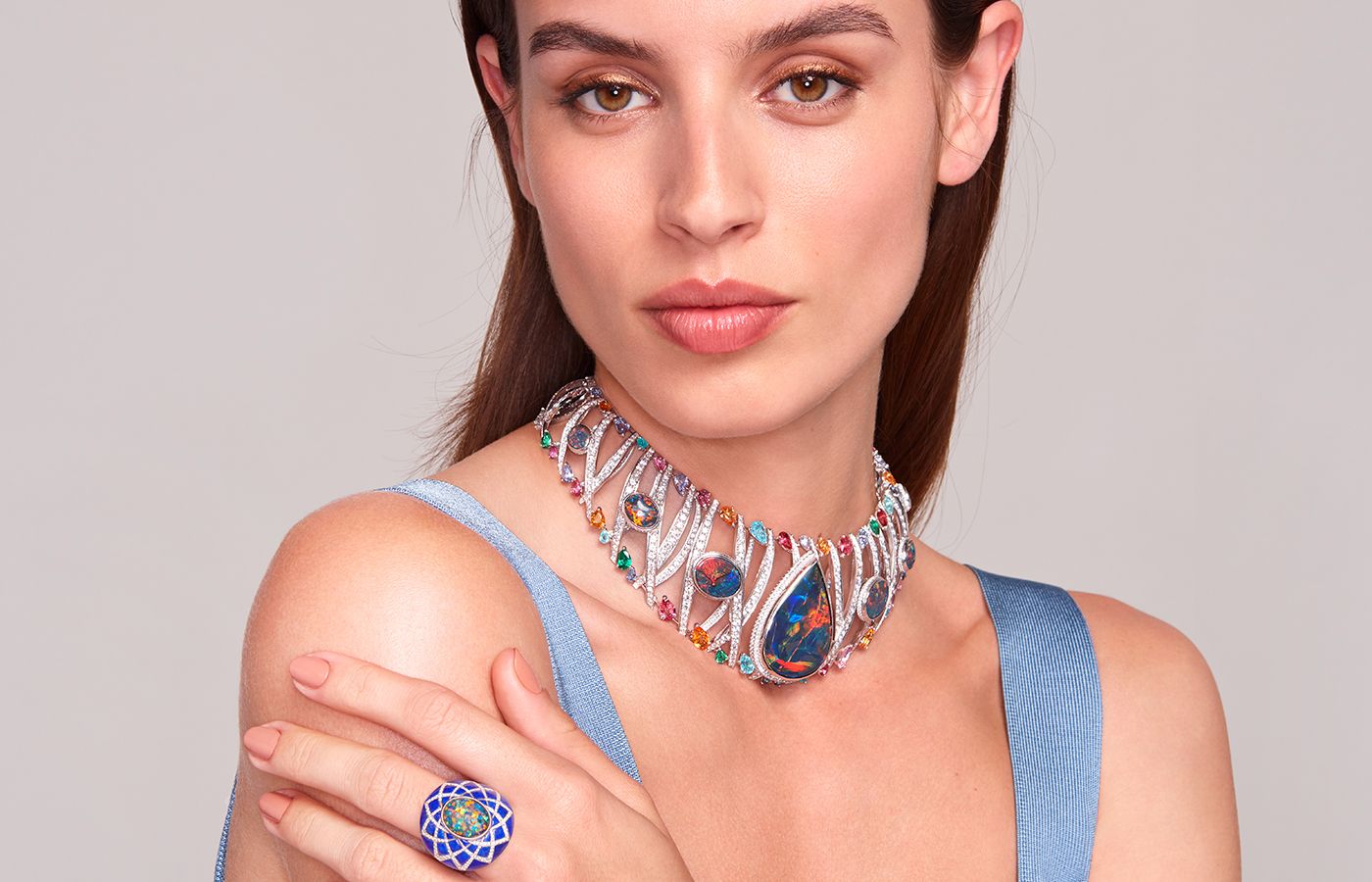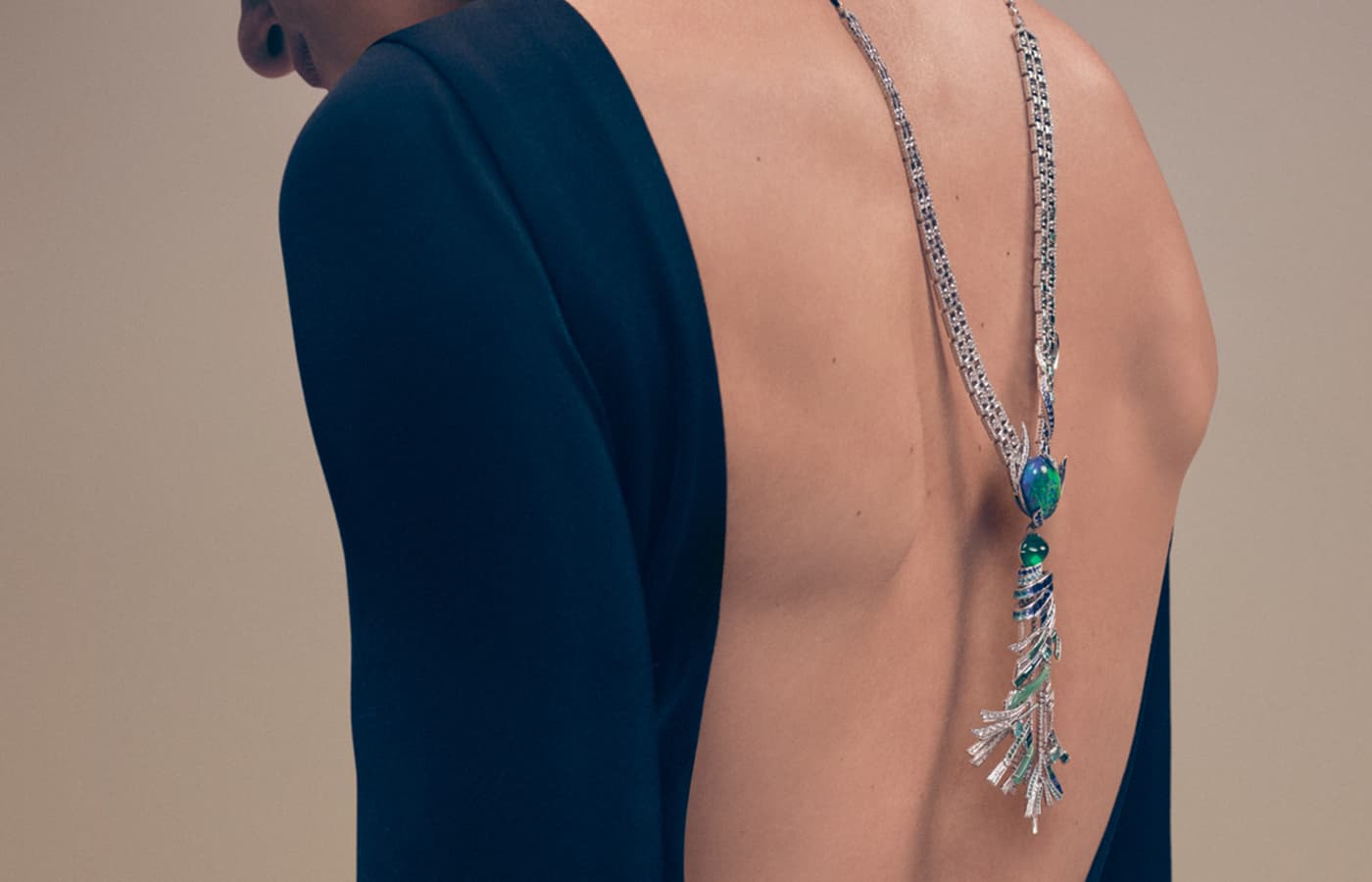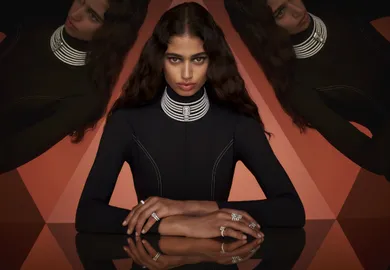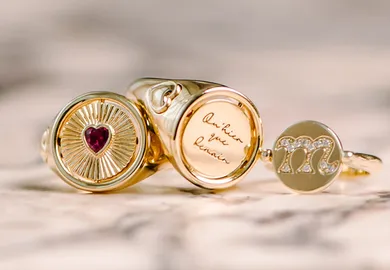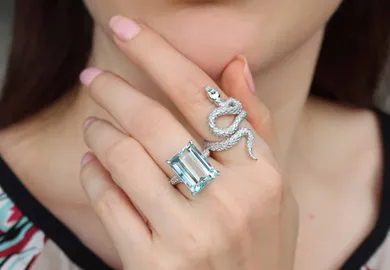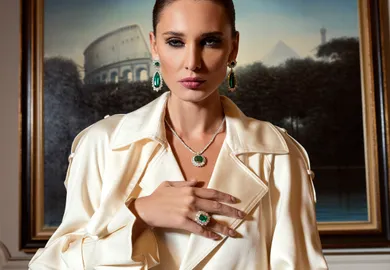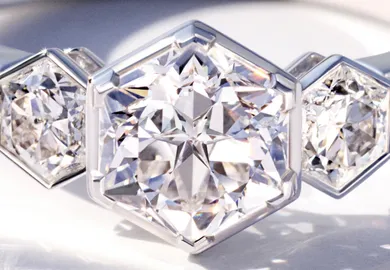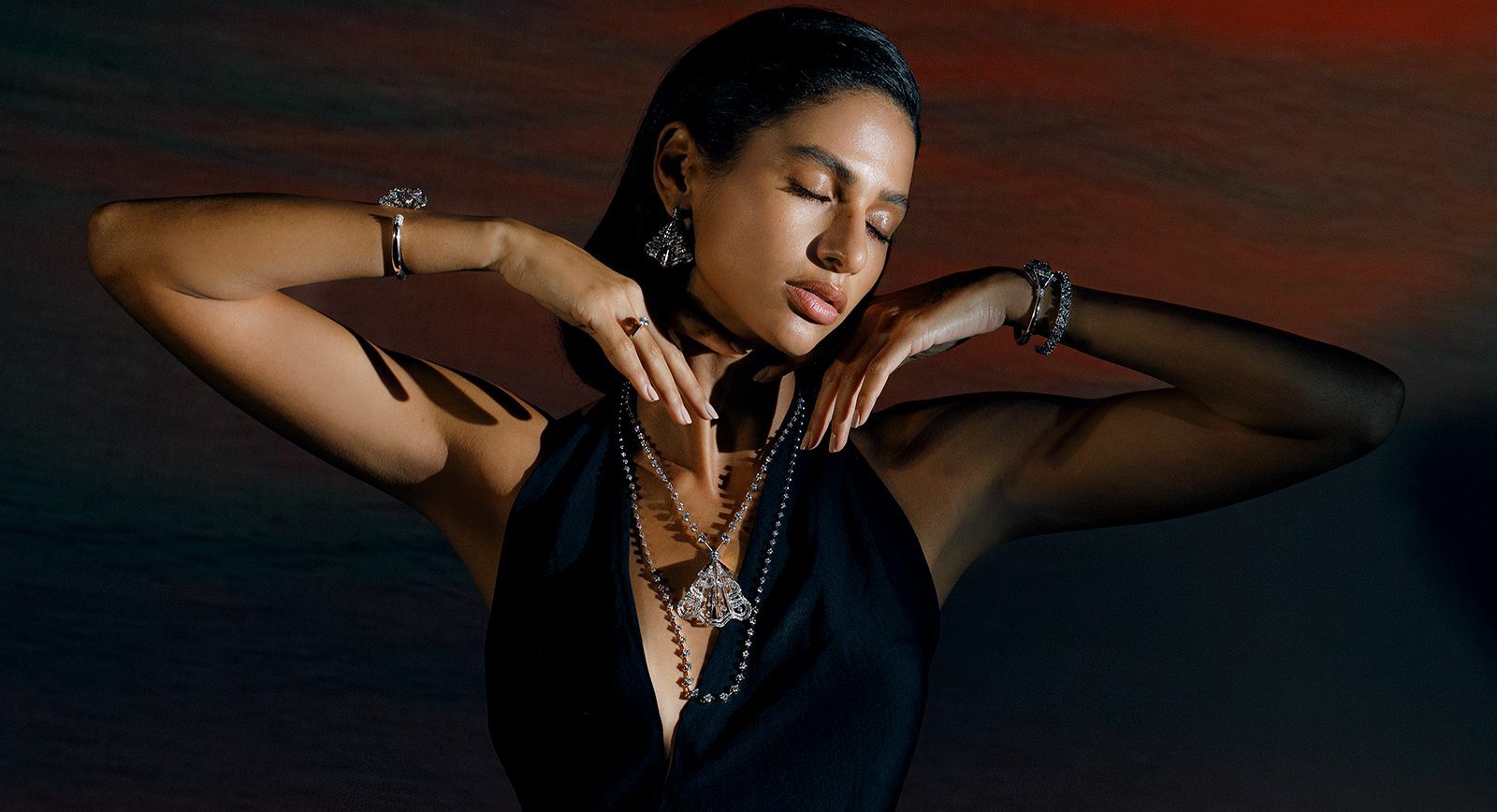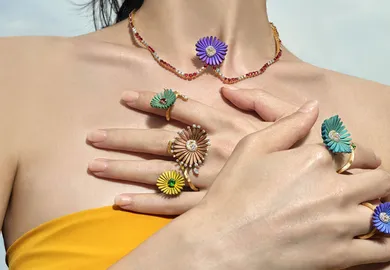
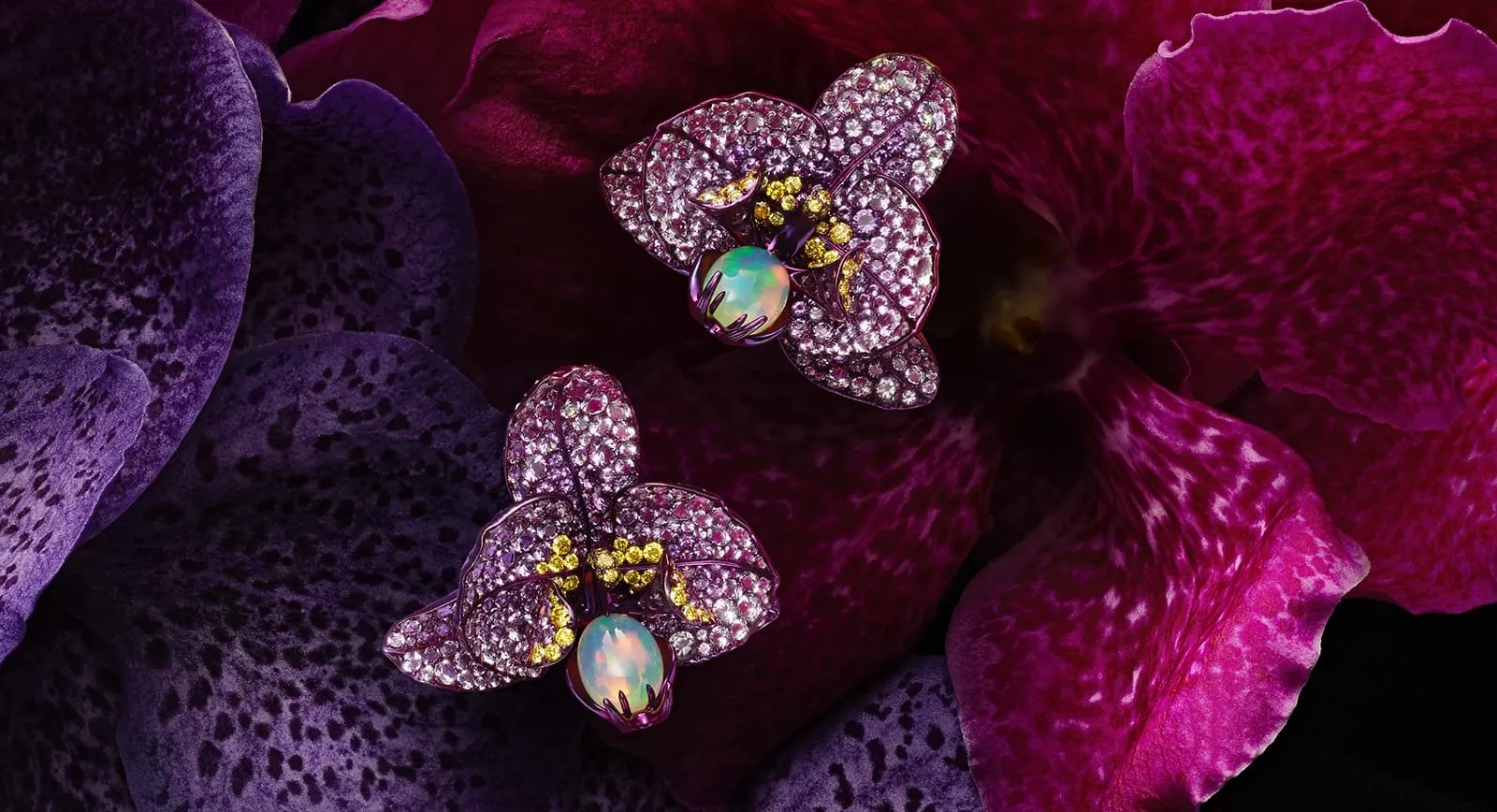
Happy Opal Birthday: The October Amulet Birthstone
After a long ‘vacation’, the noble opal – the birthstone for the month of October – once again finds itself at the height of fashion. Indeed, high jewellery collections of recent years have been saturated with these unique stones. It’s safe to say the incredible play of colour demonstrated by precious opals is mesmerising designers and jewellery aficionados alike! Here are some of our favourite opal jewellery creations from world-leading designers and high jewellery collections of note.
Gemmologists can distinguish more than 140 varieties of opal, depending on colour, composition and place of origin. Broadly speaking, they can be divided into two large groups: noble stones, with a characteristic iridescence, and ordinary ones, without such iridescence.
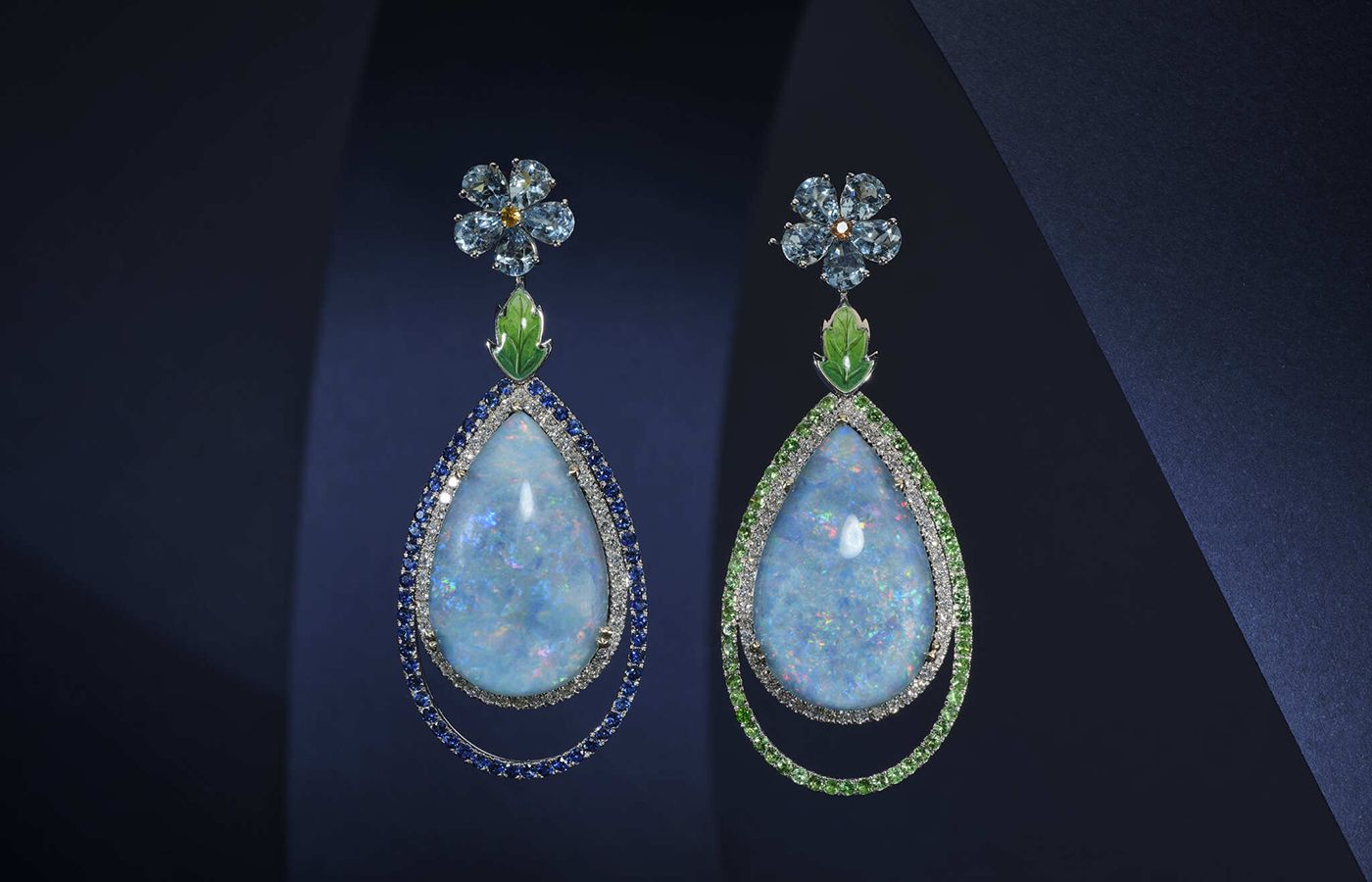
Basak Baykal Forget Me Not opal, sapphire, garnet, aquamarine, enamel and diamond earrings
But regardless of how you divvy up the stones, you would be hard-pressed to find two the same. Each individual opal possesses a unique composition. The brighter and more interesting the opal, the more actively it determines the specific architecture of a piece of jewellery, in some cases dictating its shape and design. Yet, paradoxically, the more unusual an opal, the harder it can be to create a worthy piece of surrounding jewellery! This is precisely the reason why I treat a certain breed of designs – those that are neither excessively simple nor excessively gaudy – with such special reverence.
The play of light is the opal’s most valuable quality. It is for precisely this reason that a stone is often cut into a rounded cabochon, ensuring the entire surface of the stone is even and smooth. Through this kind of processing, the stone can fully reveal its potential and display the true wonder of its possible colour spectrum. In some cases, opals retain an organic and fluid shape that can look especially striking in high jewels. It is the art of the designer to encapsulate these natural forms into a piece that presents a precious opal’s colour to its best advantage.
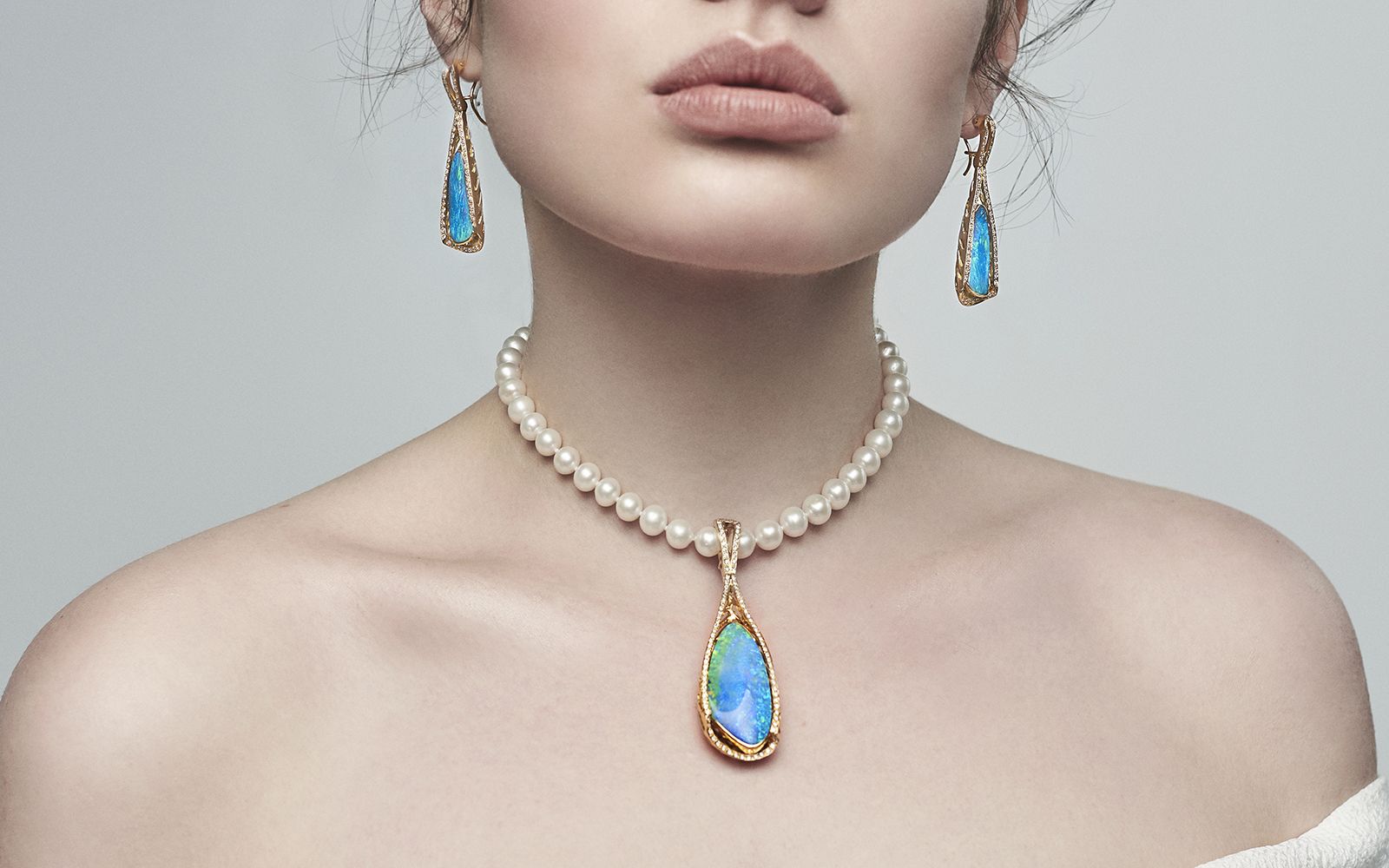
Opal Minded
Opals can be seen in works by Dior, Boucheron, Feng J, Chopard, Louis Vuitton, Boghossian and other world-famous brands. These houses have placed colourful cabochons next to sapphires, rubies, and emeralds and in some cases, even offered them a position of priority over these more traditional stones! Take, for example, the star of Louis Vuitton’s Bravery collection (which I should note is dedicated to Louis Vuitton’s birthday) – the La Constellation D’Hercule or “The Constellation of Hercules” necklace – composed of 12 opals, 11 tanzanites and 9 tsavorites, studded with diamonds.
More recently, David Morris unveiled the Ribbon necklace at the heart of its Modern Classics High Jewellery collection. The pear-shaped black opal centre stone is from Australia and weighs 41 carats. It’s surrounded by white diamonds, pink and blue spinels, garnets, Paraiba tourmalines and further black opals of around 30 carats. Elsewhere, the Chaumet Ondes et Merveilles High Jewellery collection boasts the Gulf Stream necklace set with a 19.84-carat black Australian opal. Emeralds, sapphires, diamonds and Paraiba tourmalines are its precious co-stars.
And if you’re a fan of fire opal, I recommend a closer look at the Tasaki Atelier Ore necklace from the Radiant Sky High Jewellery collection. It’s set with a rainbow of coloured gems, but all appear to draw the eye to an oval-shaped fire opal cabochon that’s remarkably vibrant.
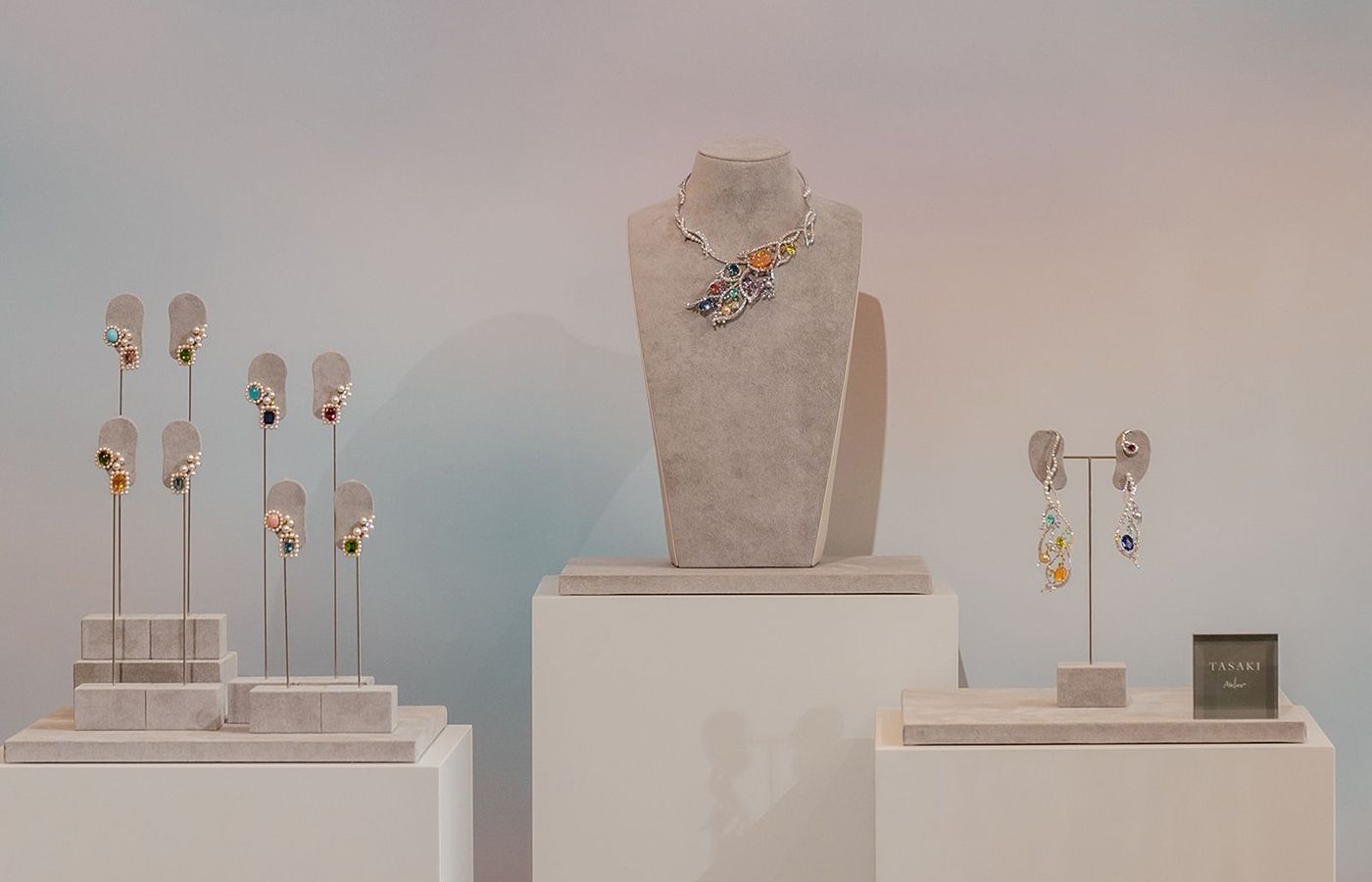
Tasaki Atelier Ore necklace featuring a fire opal, tanzanite, tourmaline and sapphire from the Radiant Sky High Jewellery collection
Below, I have drawn together an array of opal jewellery that showcases the natural beauty of the October birthstone. I invite you to create a dream shopping list for your own private collection…
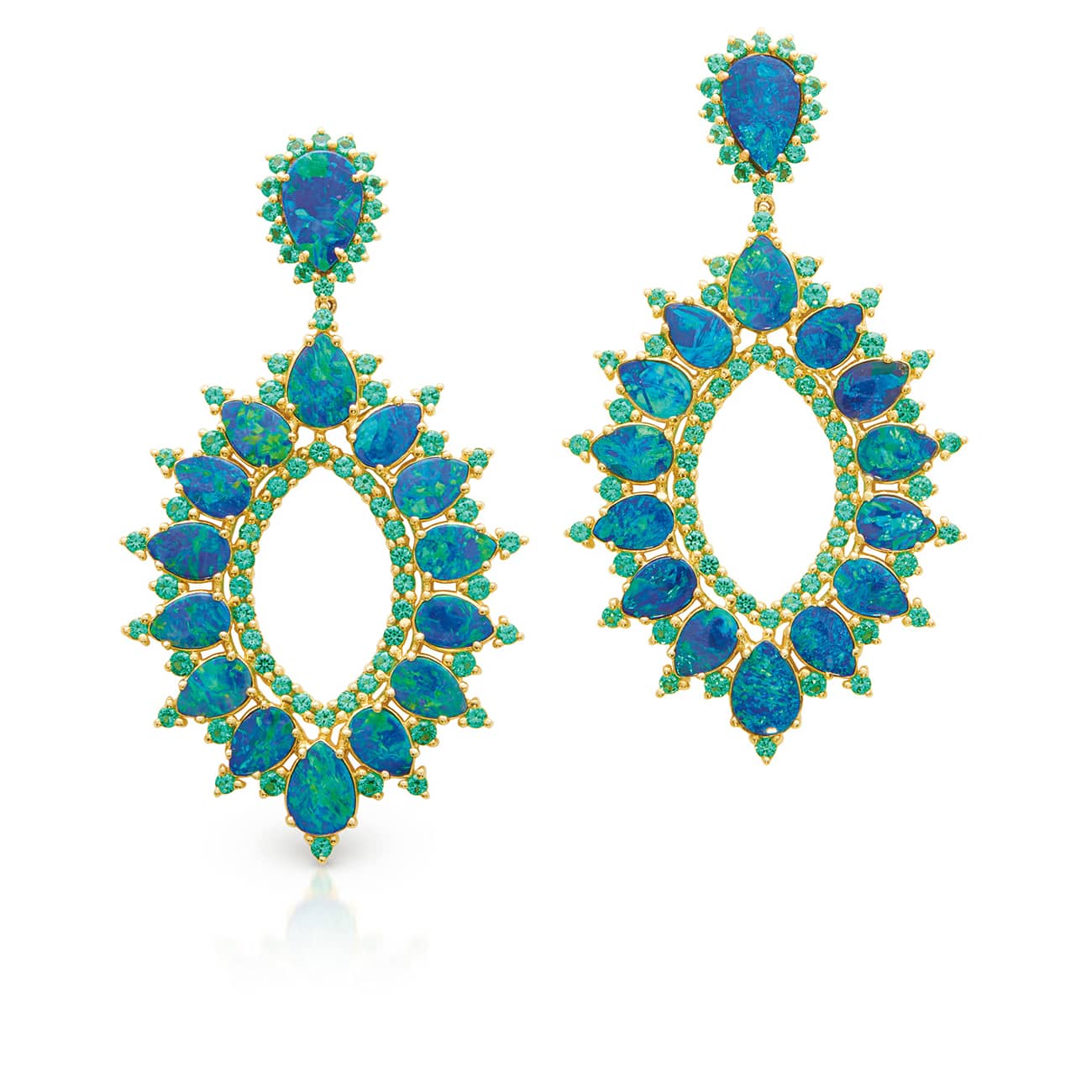
Anne Sisteron
Anne Sisteron
Elektra earrings in opal and tsavorite
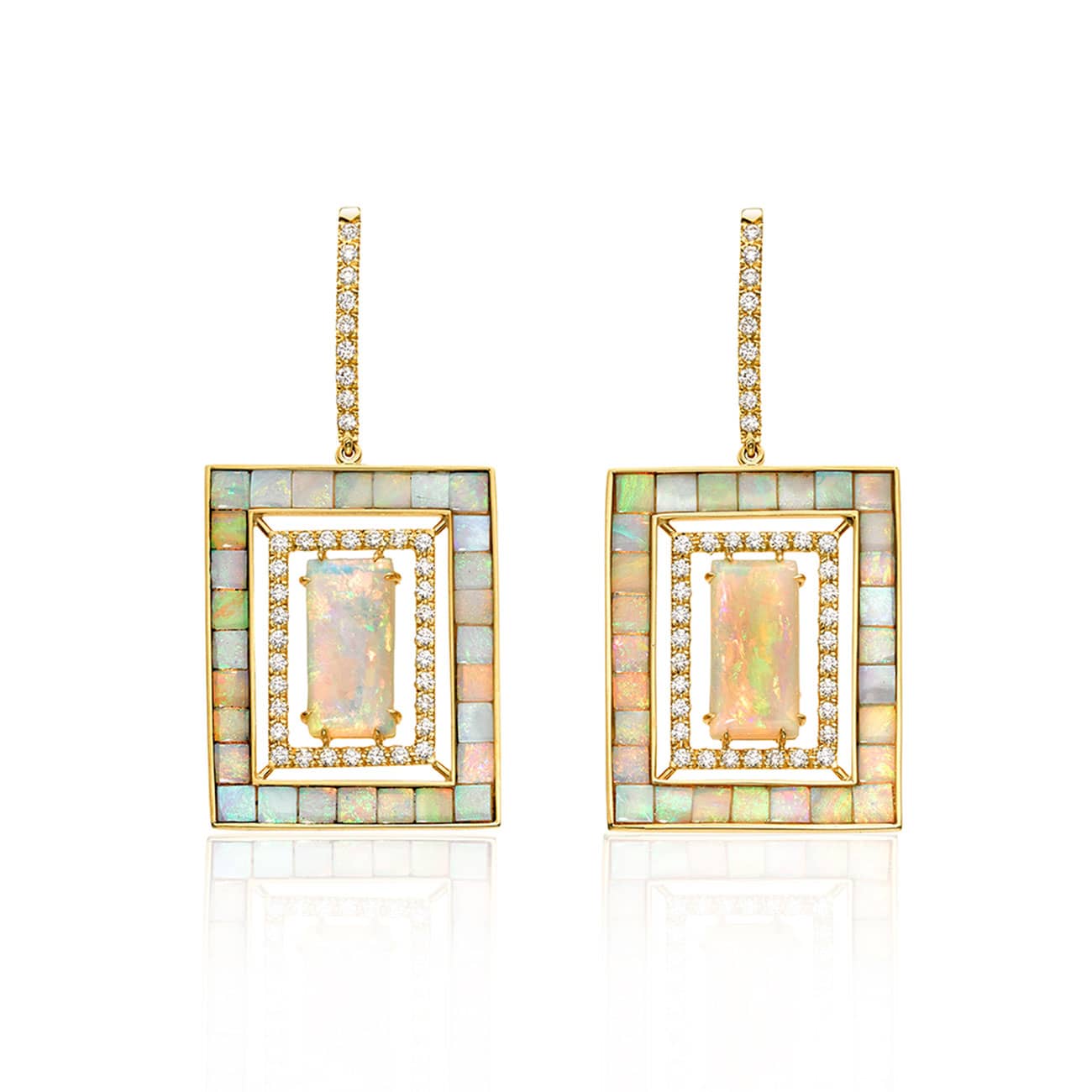
Kimberly McDonald
Kimberly McDonald
Stained-Glass Crystal opal and diamond earrings
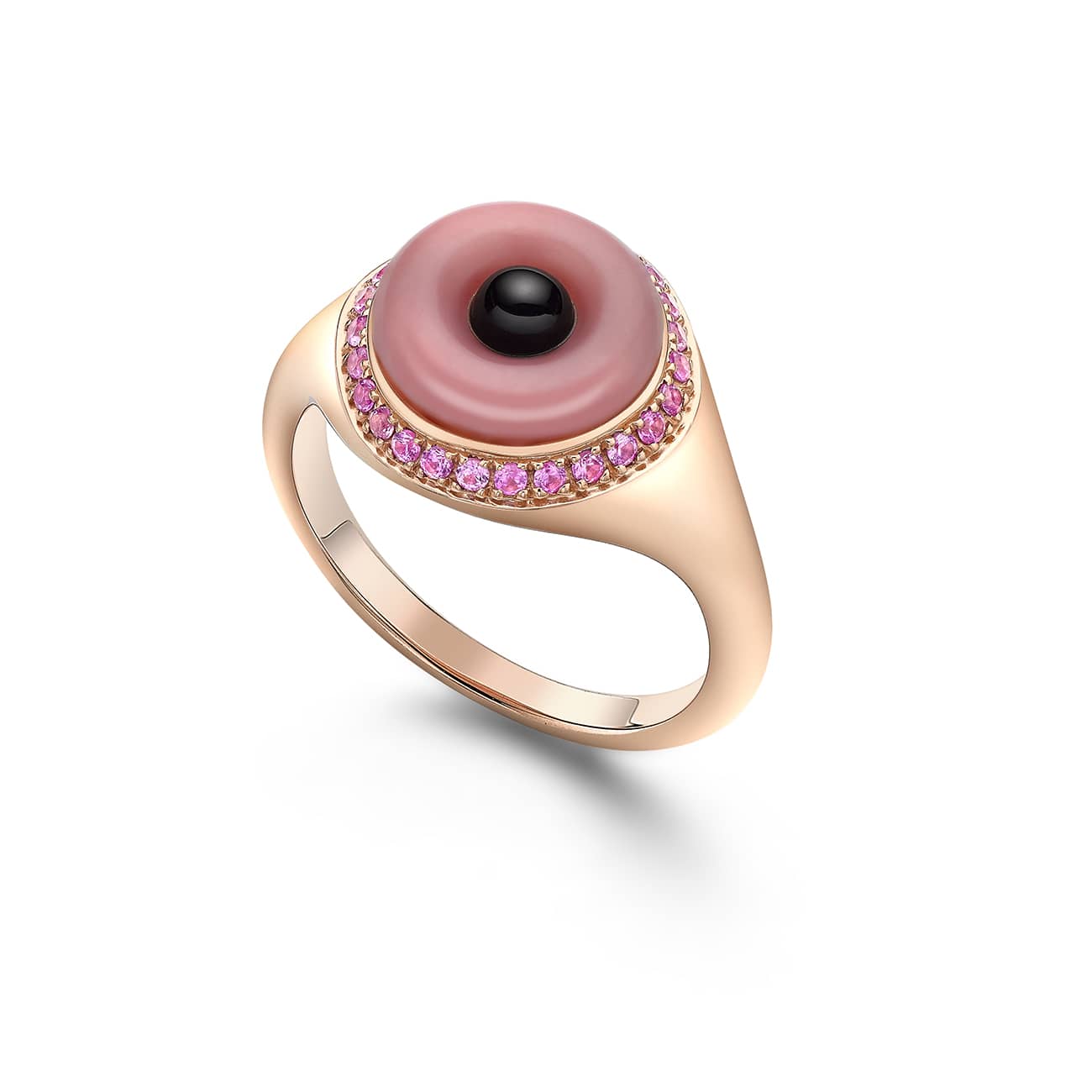
Lily Gabriella
Lily Gabriella
Evil Eye pink opal and pink sapphire Ring
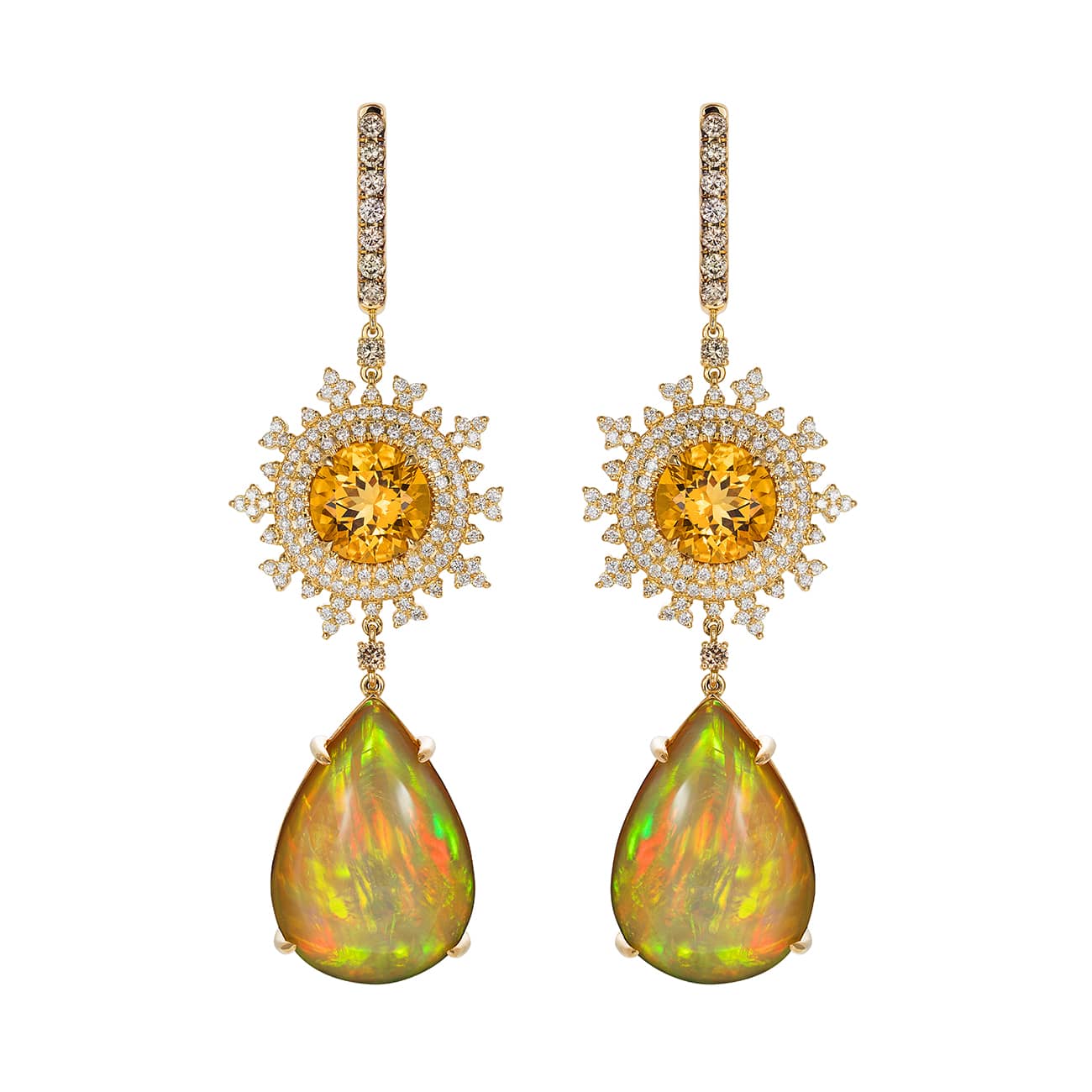
Nadine Aysoy
Nadine Aysoy
Tsarina Sun Flake & Opal earrings in Tsarina beryl, fire opal and brown and white diamonds
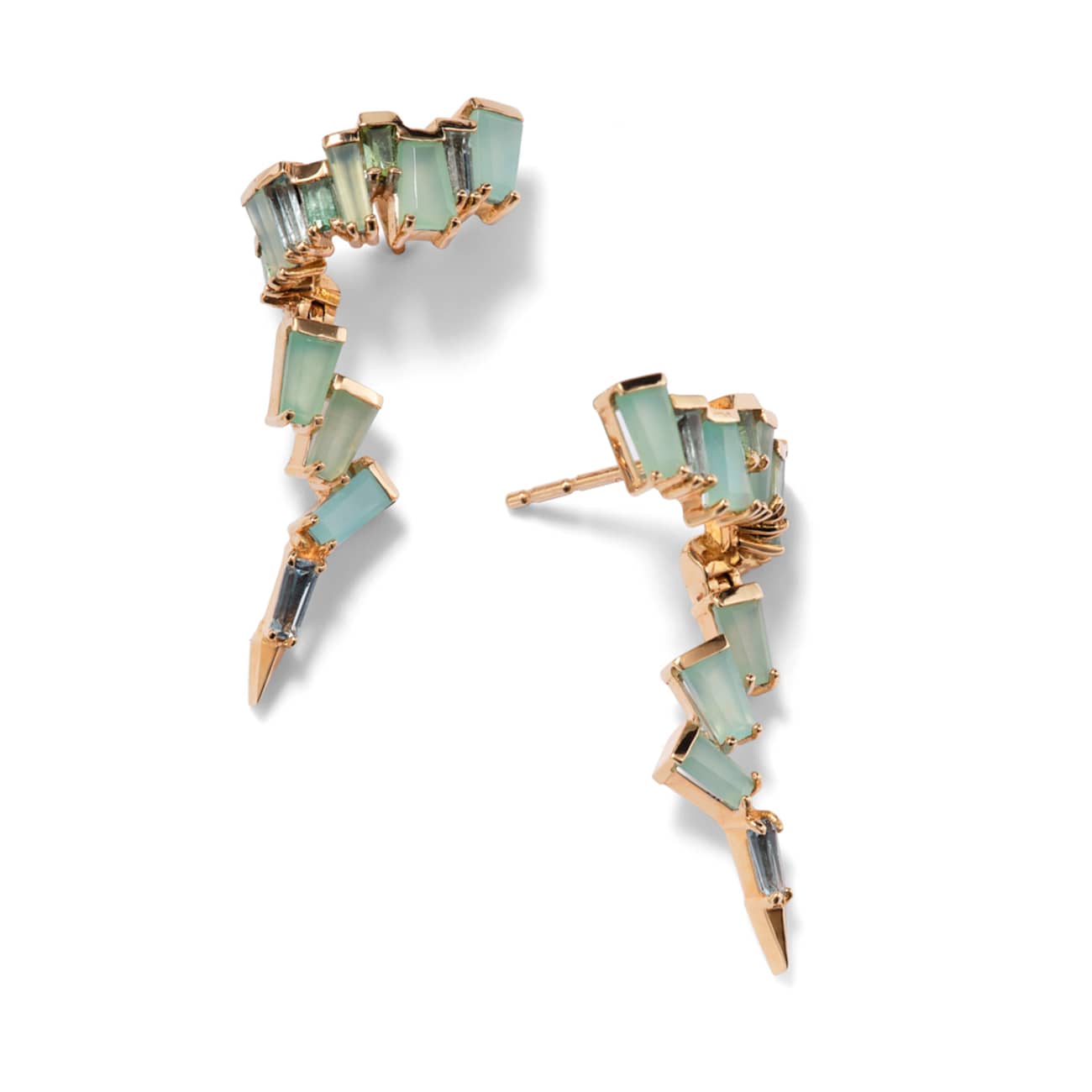
Nak Armstrong
Nak Armstrong
Opal and rose gold earrings
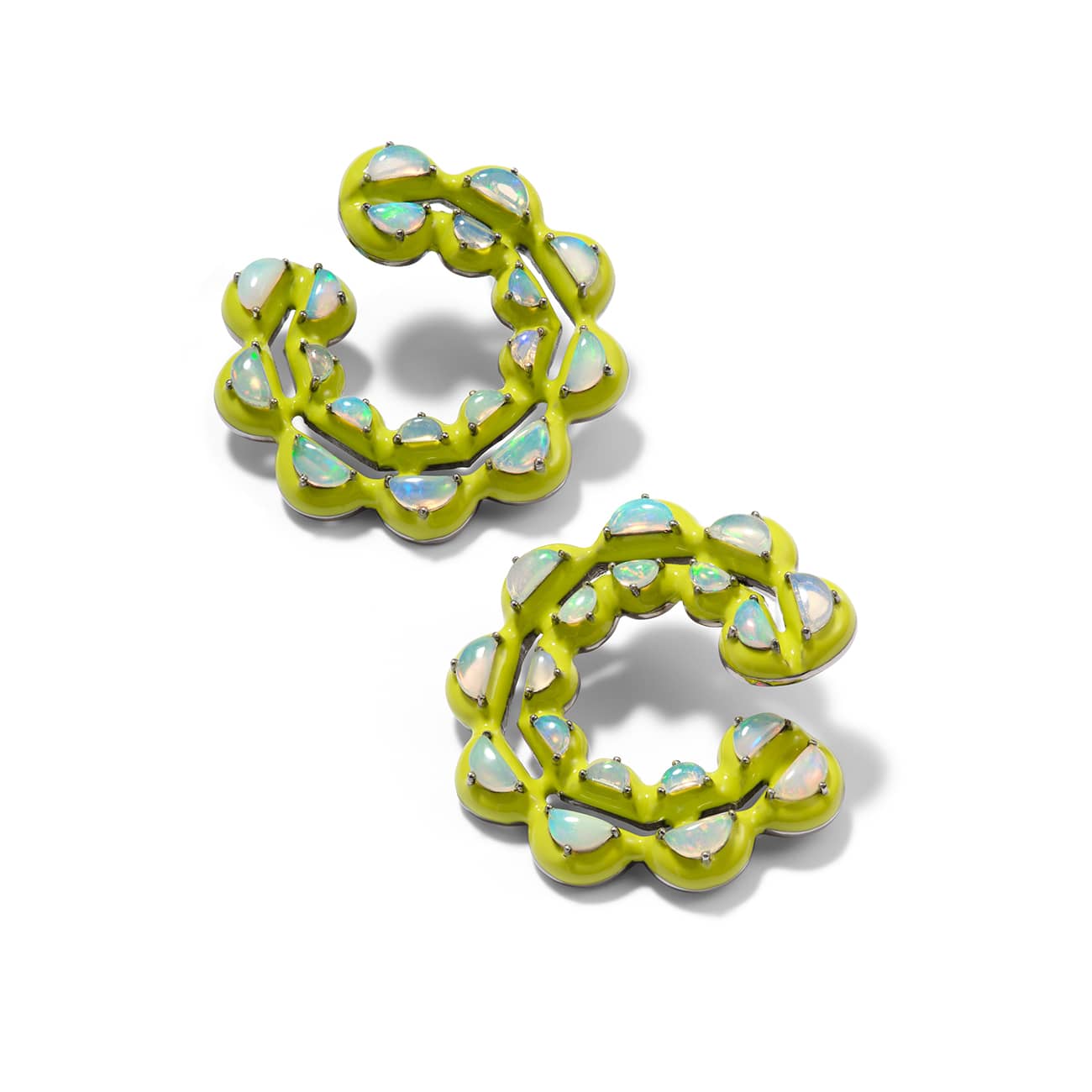
Nakard
Nakard
Caterpillar Chartreuse Enameled Bypass hoops in Ethiopian opal, sterling silver, chartreuse enamel and black rhodium finish
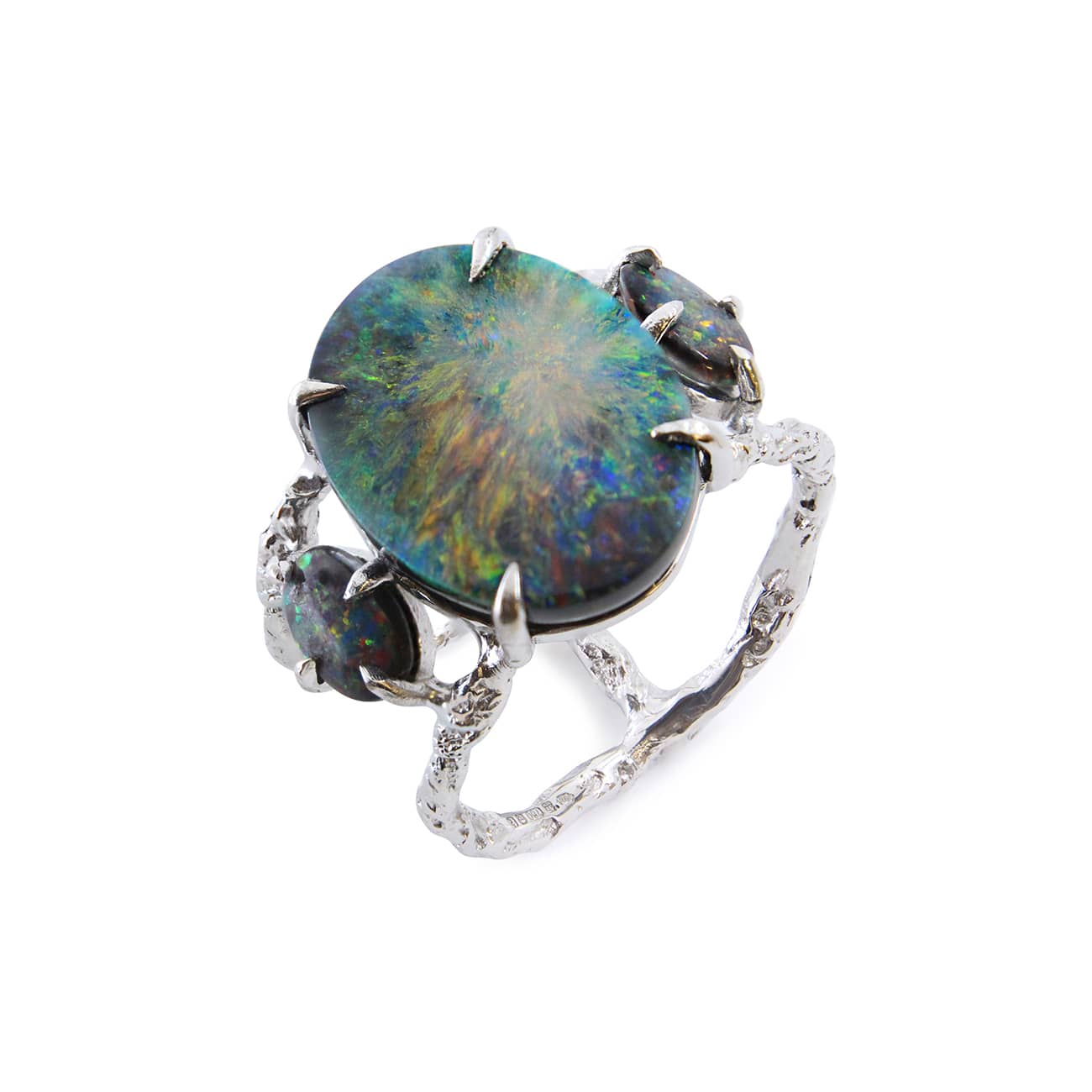
Niza Huang
Niza Huang
Opal ring
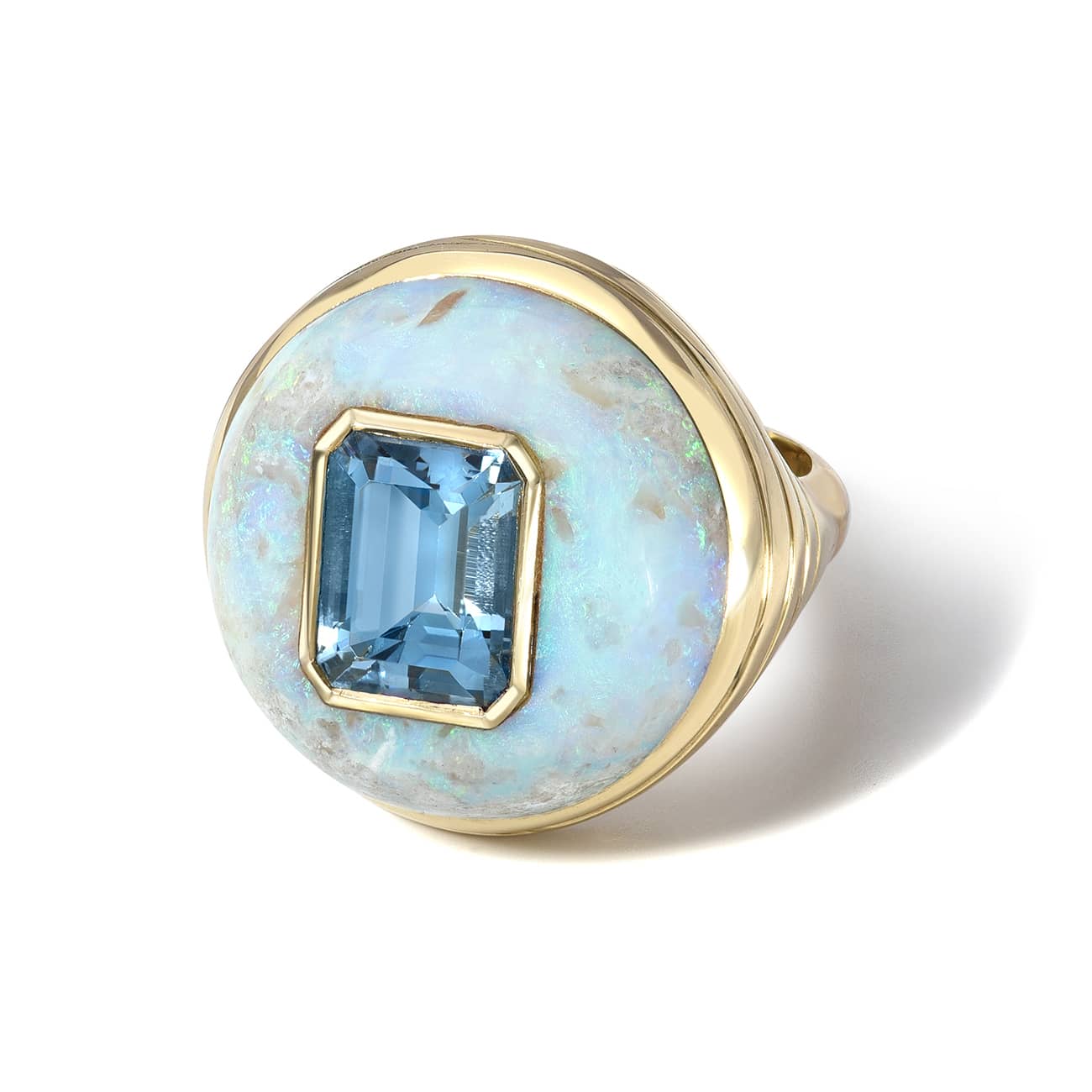
Retrouvai
Retrouvai
Lollipop opal and aquamarine ring
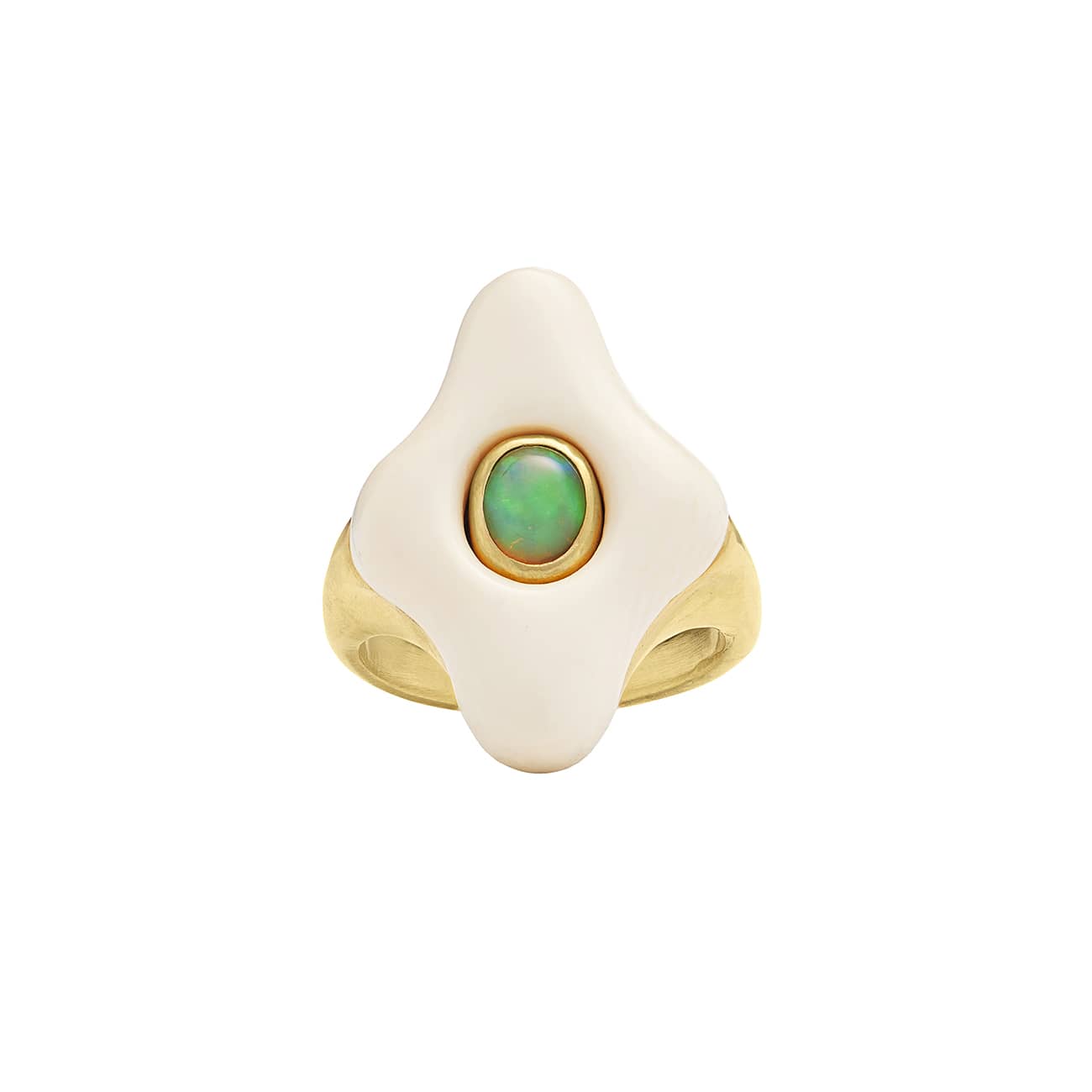
Rush
Rush
Madison Opal & Fossilized Mastodon Tusk ring featuring an Ethiopian opal
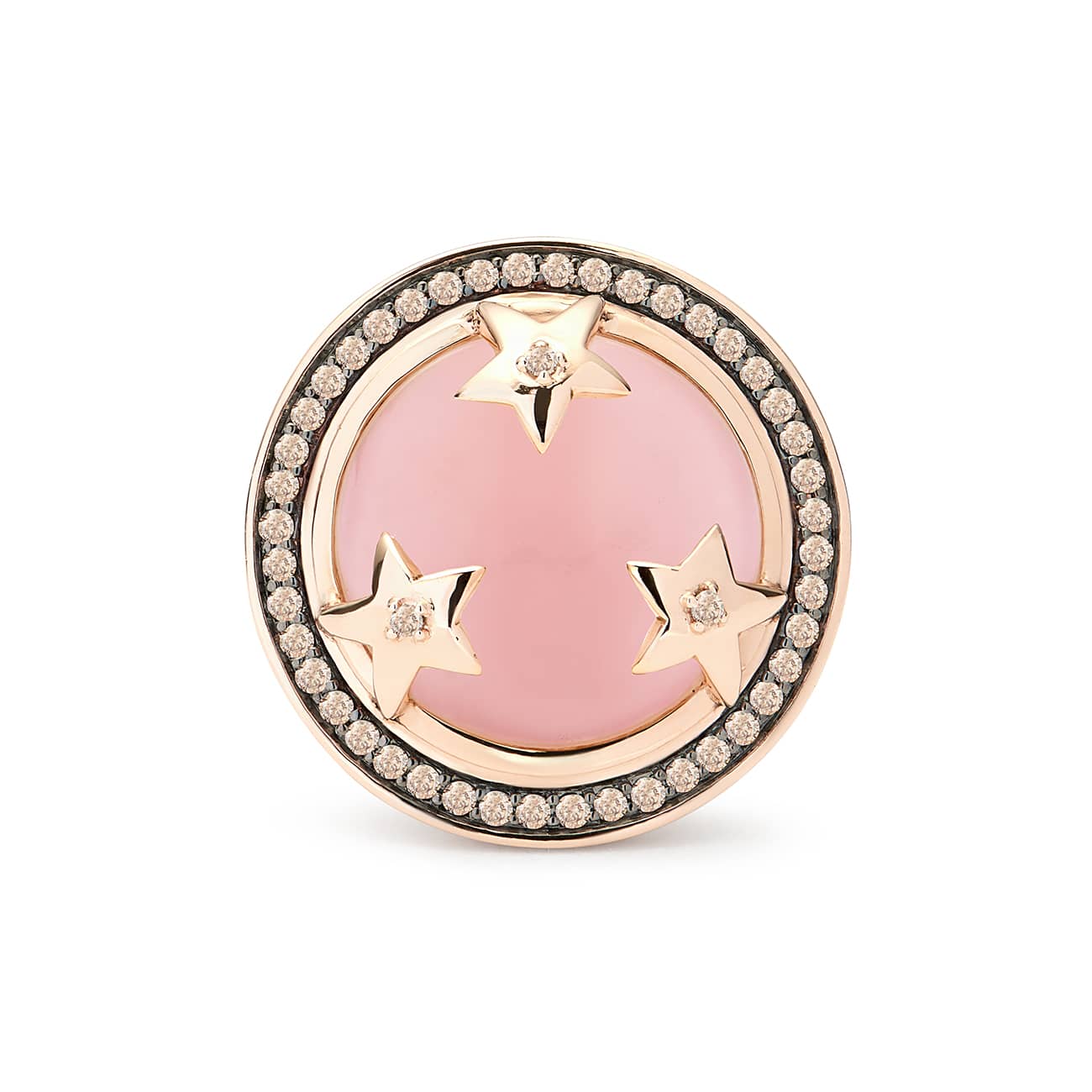
Samantha Tea
Samantha Tea
Astrid Pink ring featuring a pink opal
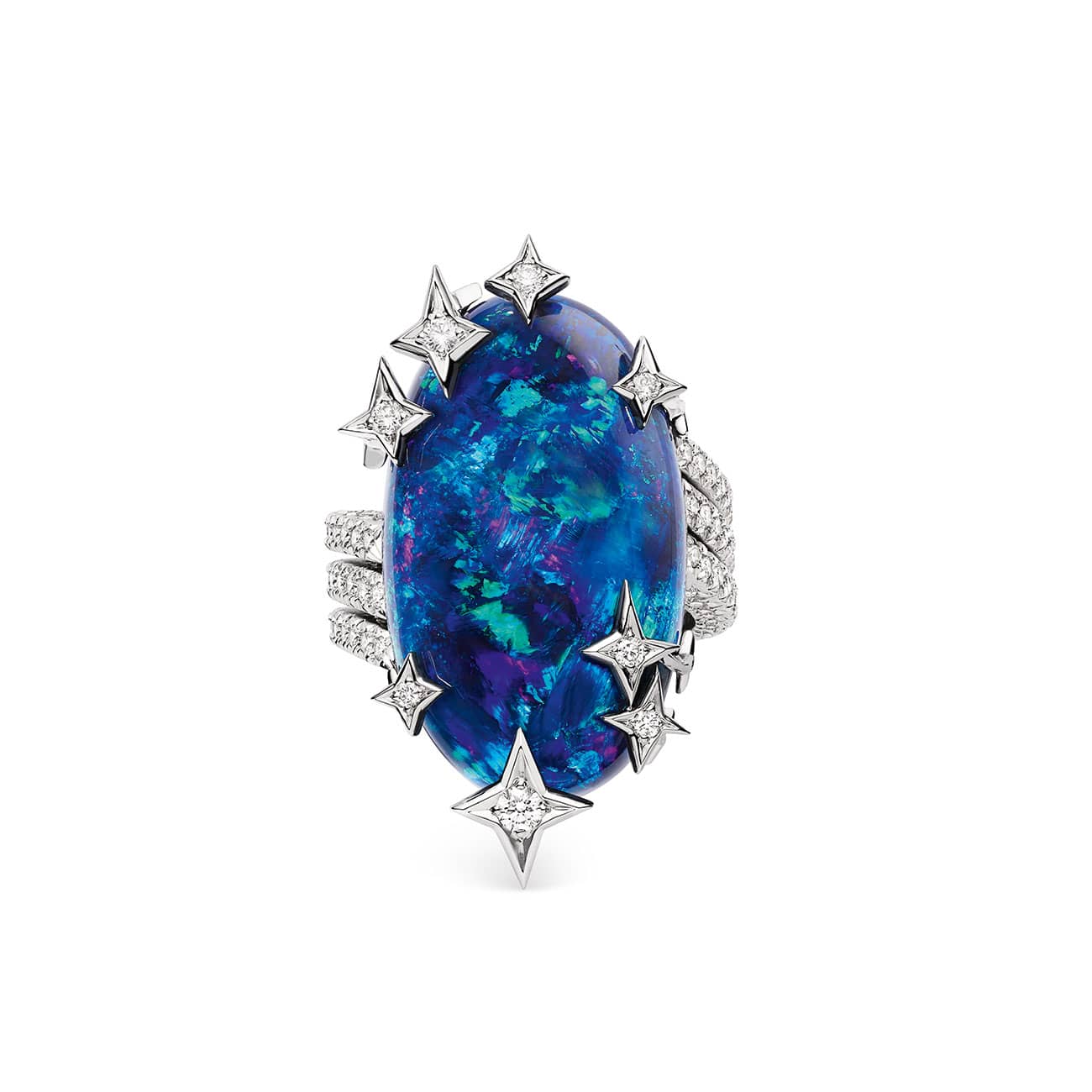
Chaumet
Chaumet
Bague Planetes opal and diamond ring
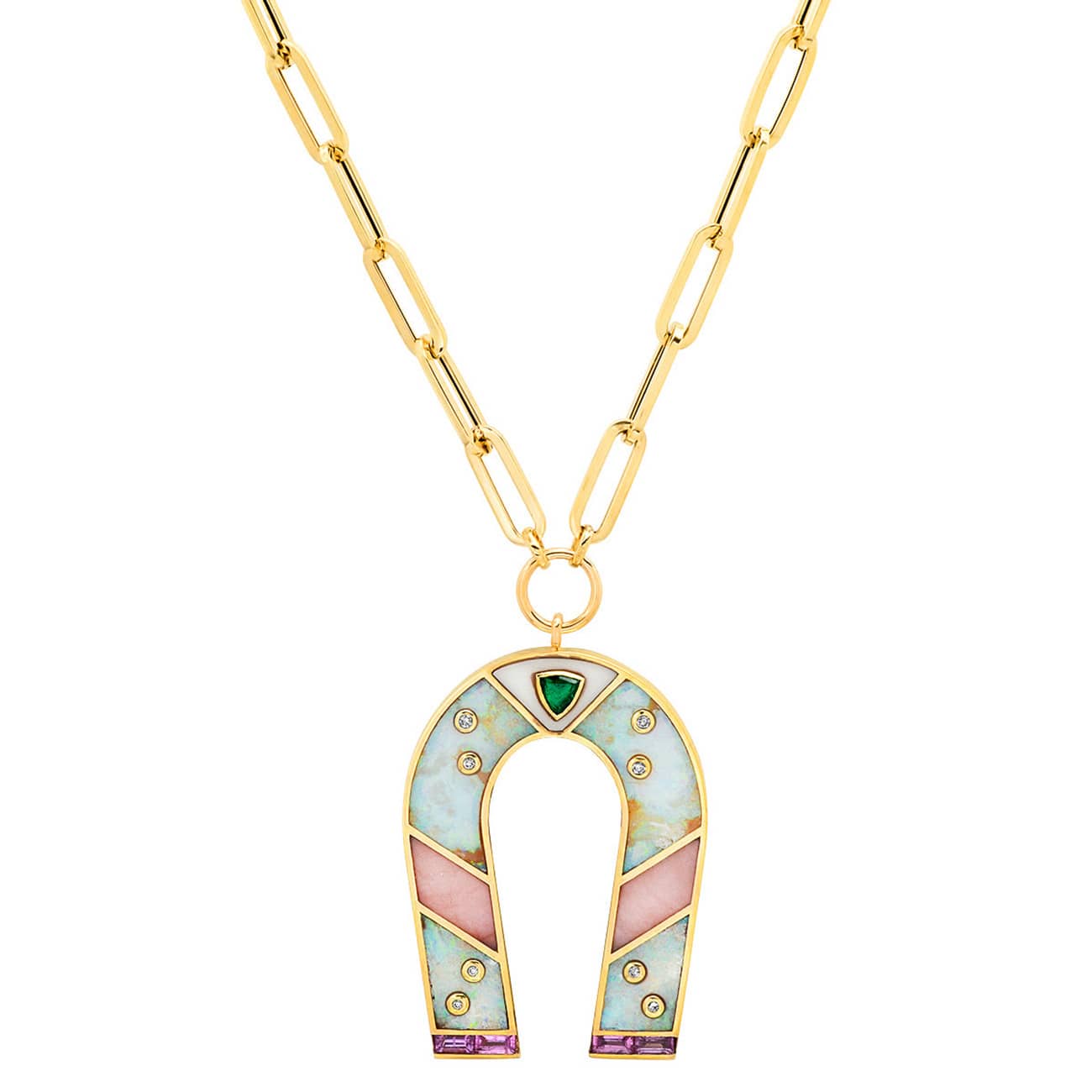
Sig Ward
Sig Ward
Manifest necklace in opal, pink opal, sapphire, emerald and diamond from the Manifest collection
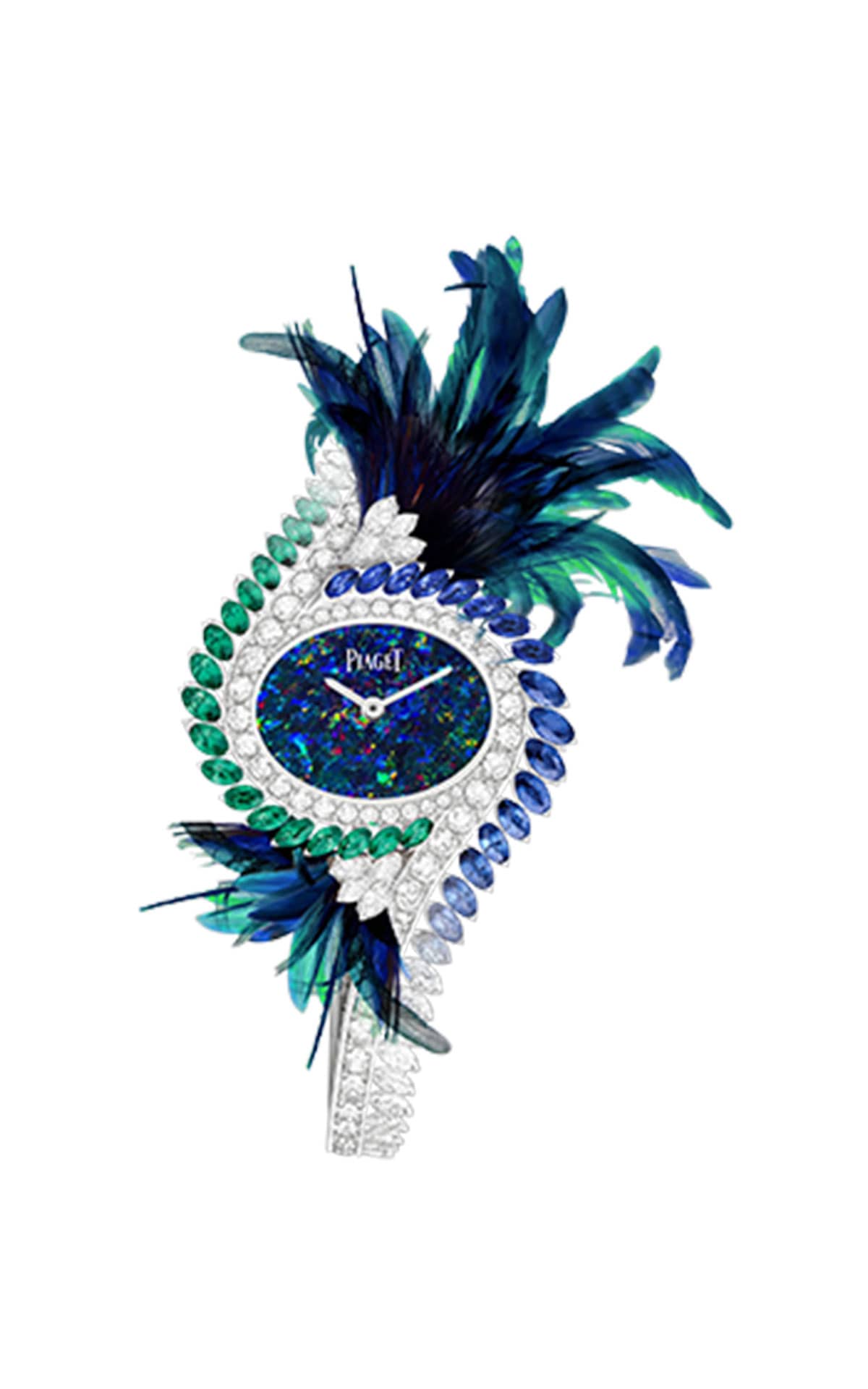
Piaget
Piaget
Extravagant Touch Watch with opal dial and feathers created in collaboration with Nelly Saunier
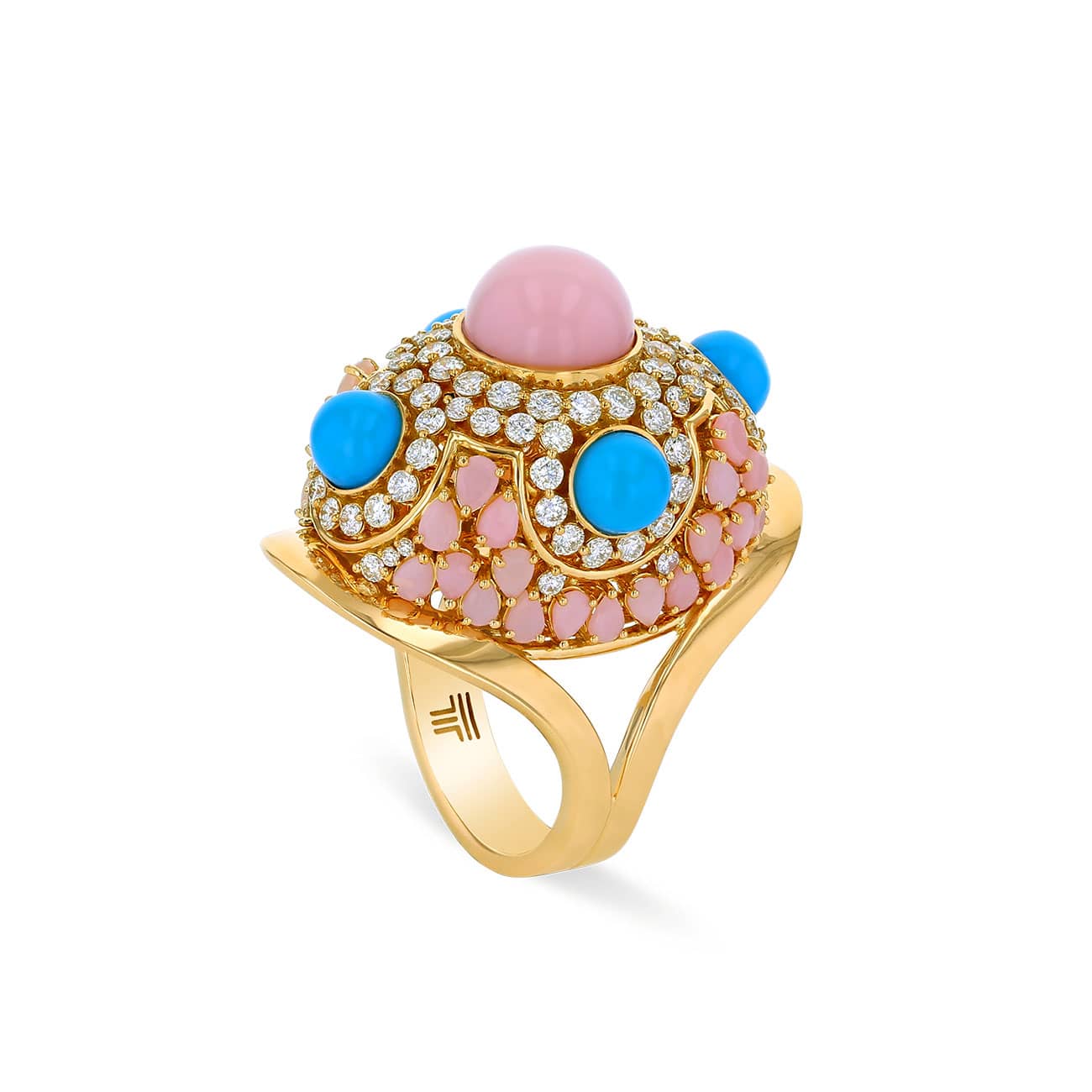
Toktam
Toktam
Majestic Qajar pink opal, turquoise and diamond ring
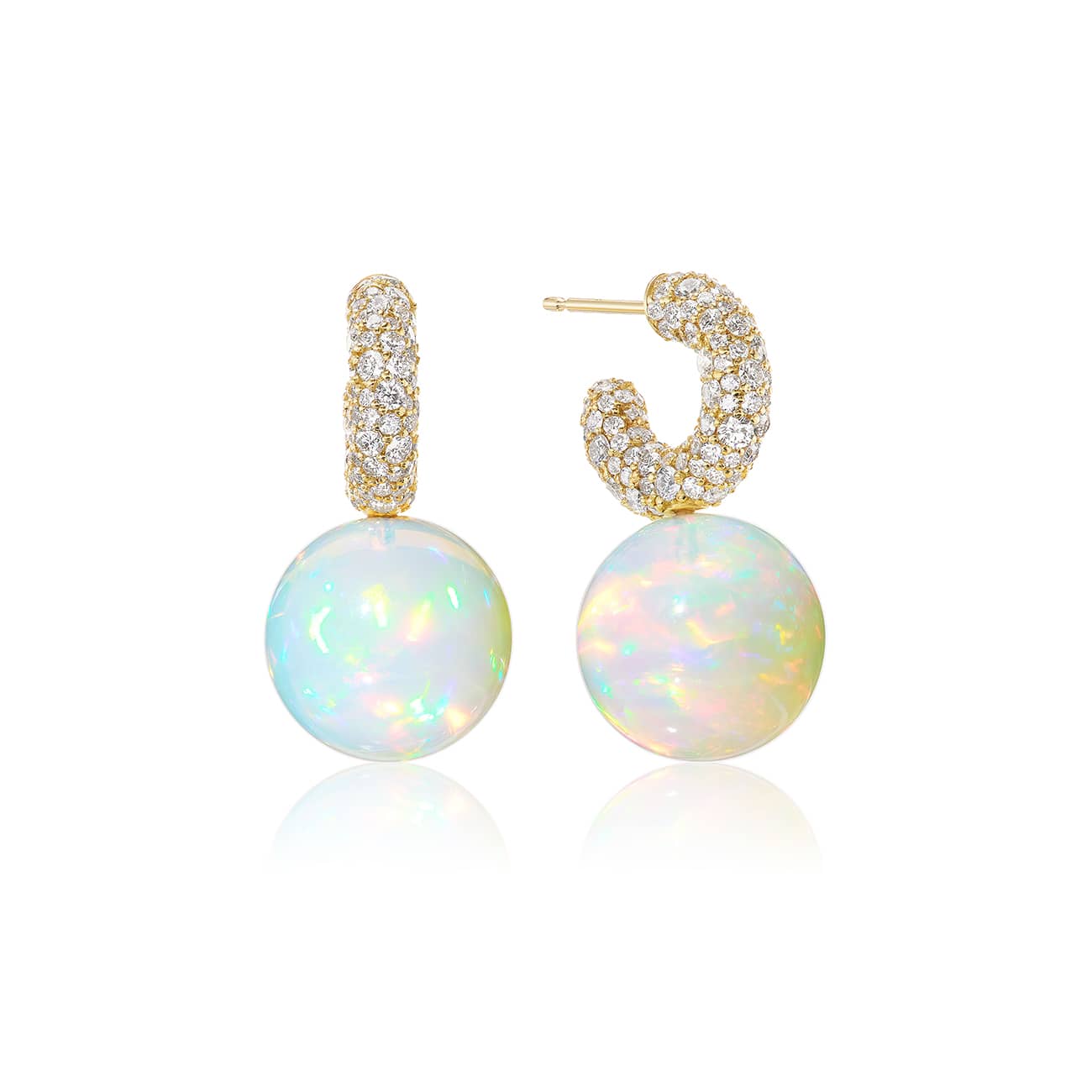
Akaila Reid
Akaila Reid
Pavé Mini Hoops in opal and diamond
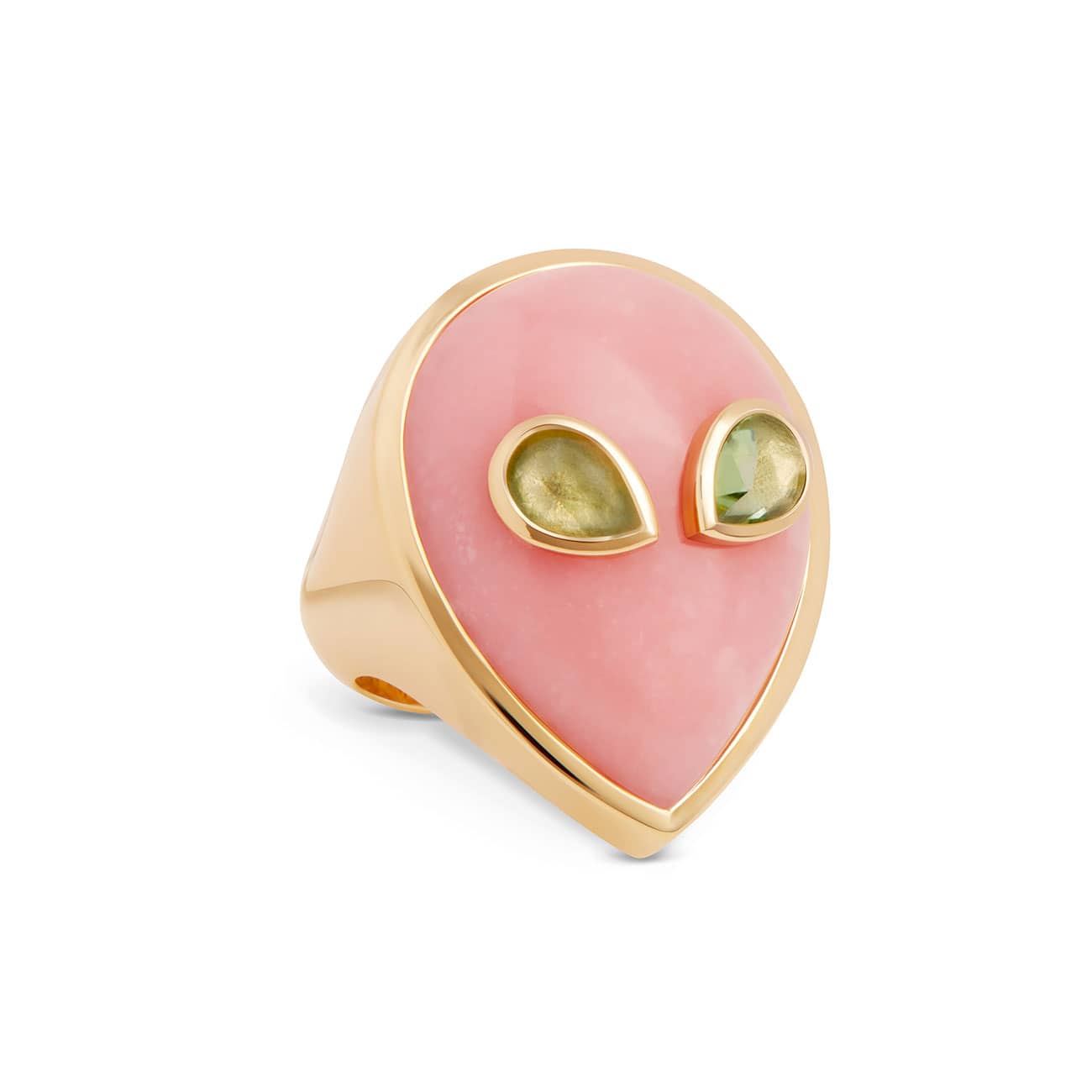
Alina Abegg
Alina Abegg
Alien ring in pink opal and peridot
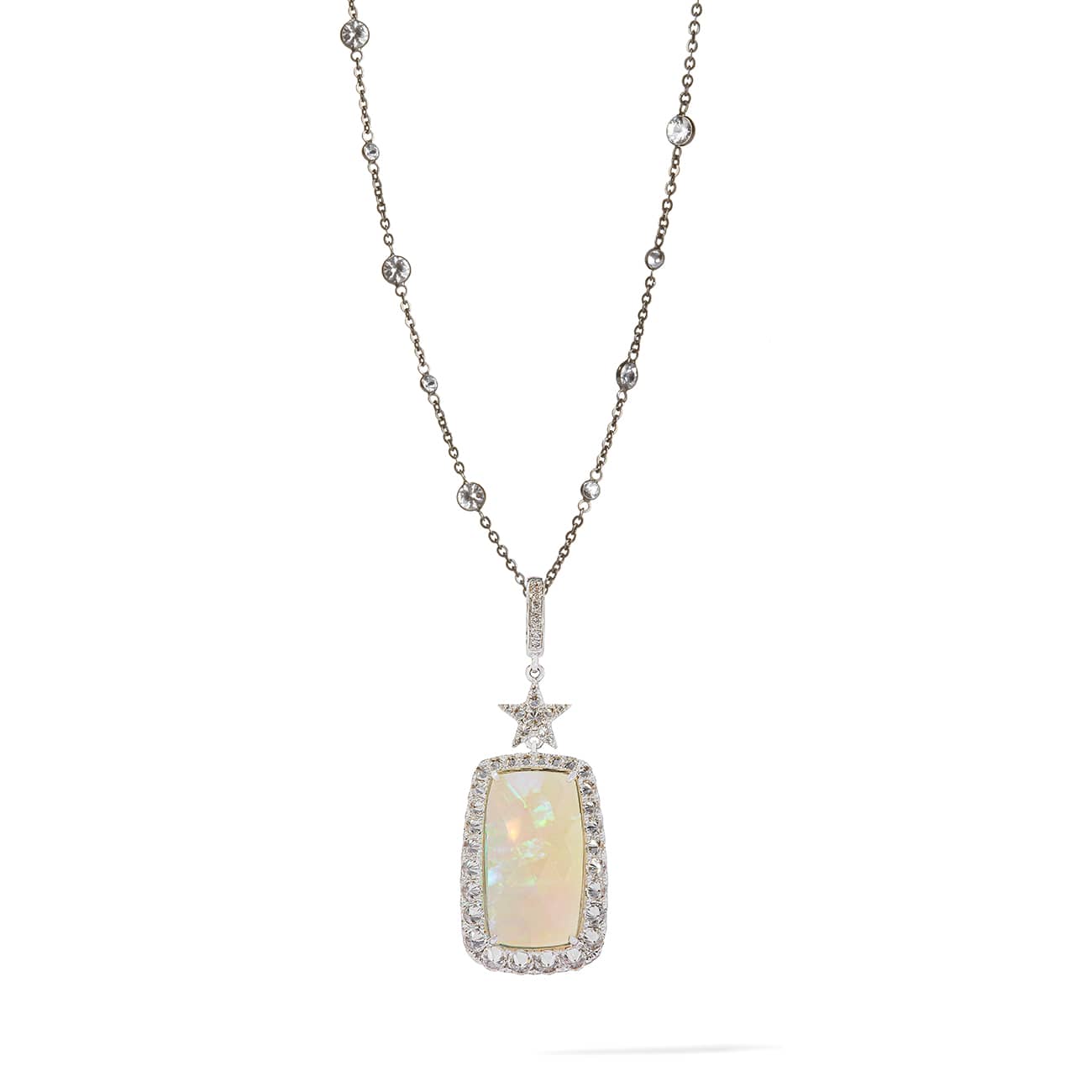
Annoushka
Annoushka
Ethiopian Opal Nectar Chain in opal and diamond
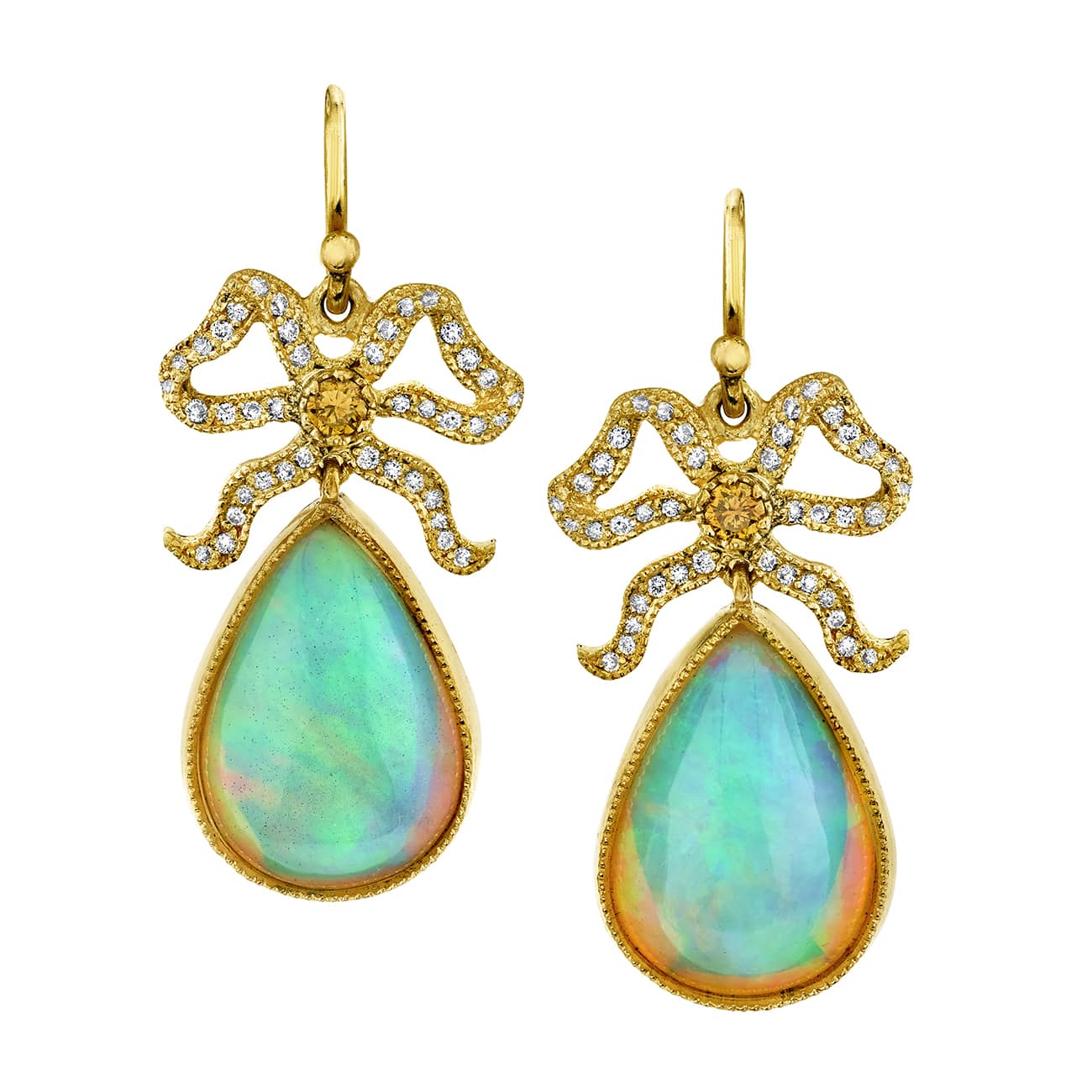
Arman Sarkisyan
Arman Sarkisyan
Bow earrings in opal, diamond and yellow gold
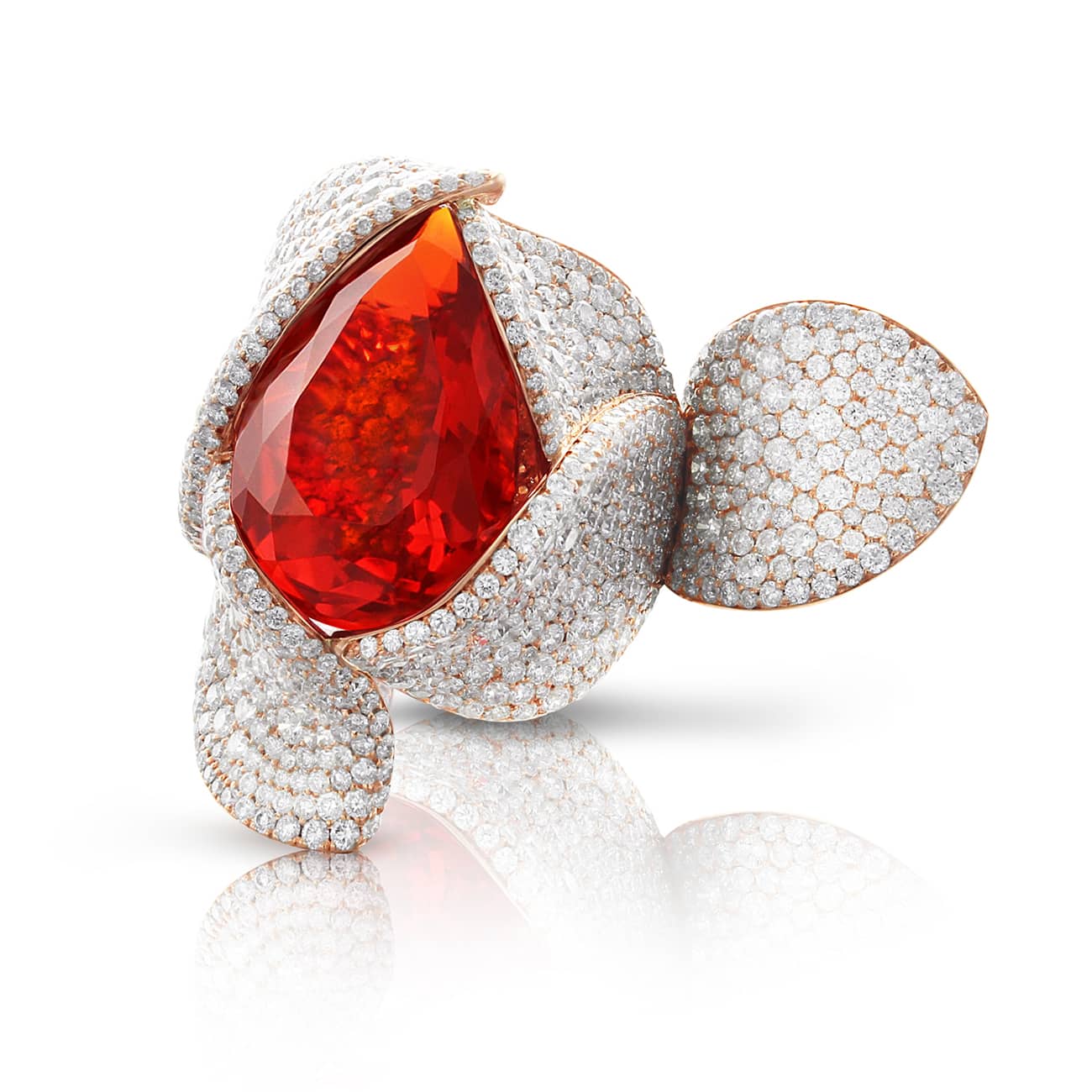
Pasquale Bruni
Pasquale Bruni
Opal and diamond High Jewellery ring
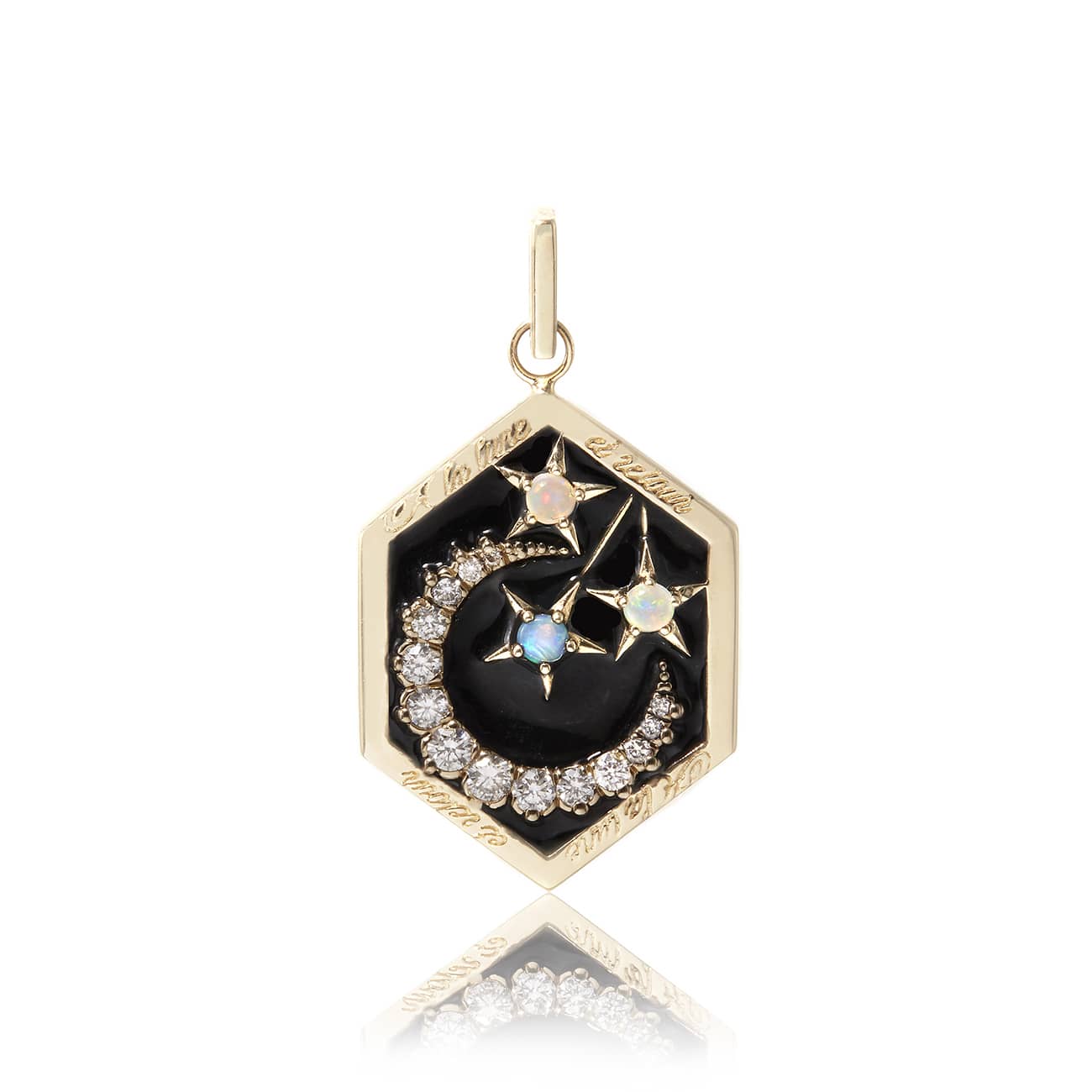
Ashley Zhang
Ashley Zhang
Enamel Moon Love Token pendant in opal, enamel and diamond
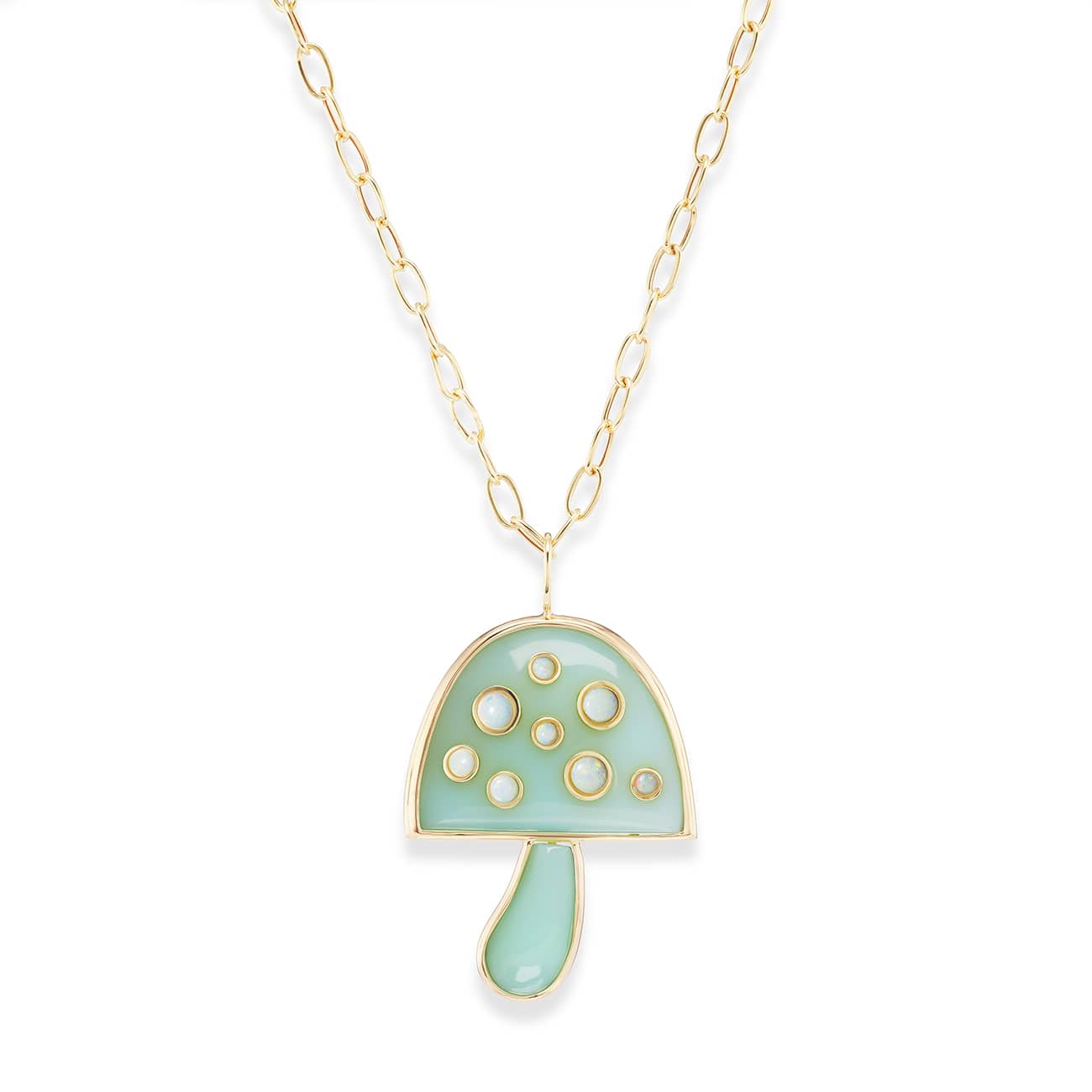
Brent Neale
Brent Neale
Large Magic Mushroom pendant with carved Peruvian opal and cabochon opals from the Down the Rabbit Hole collection
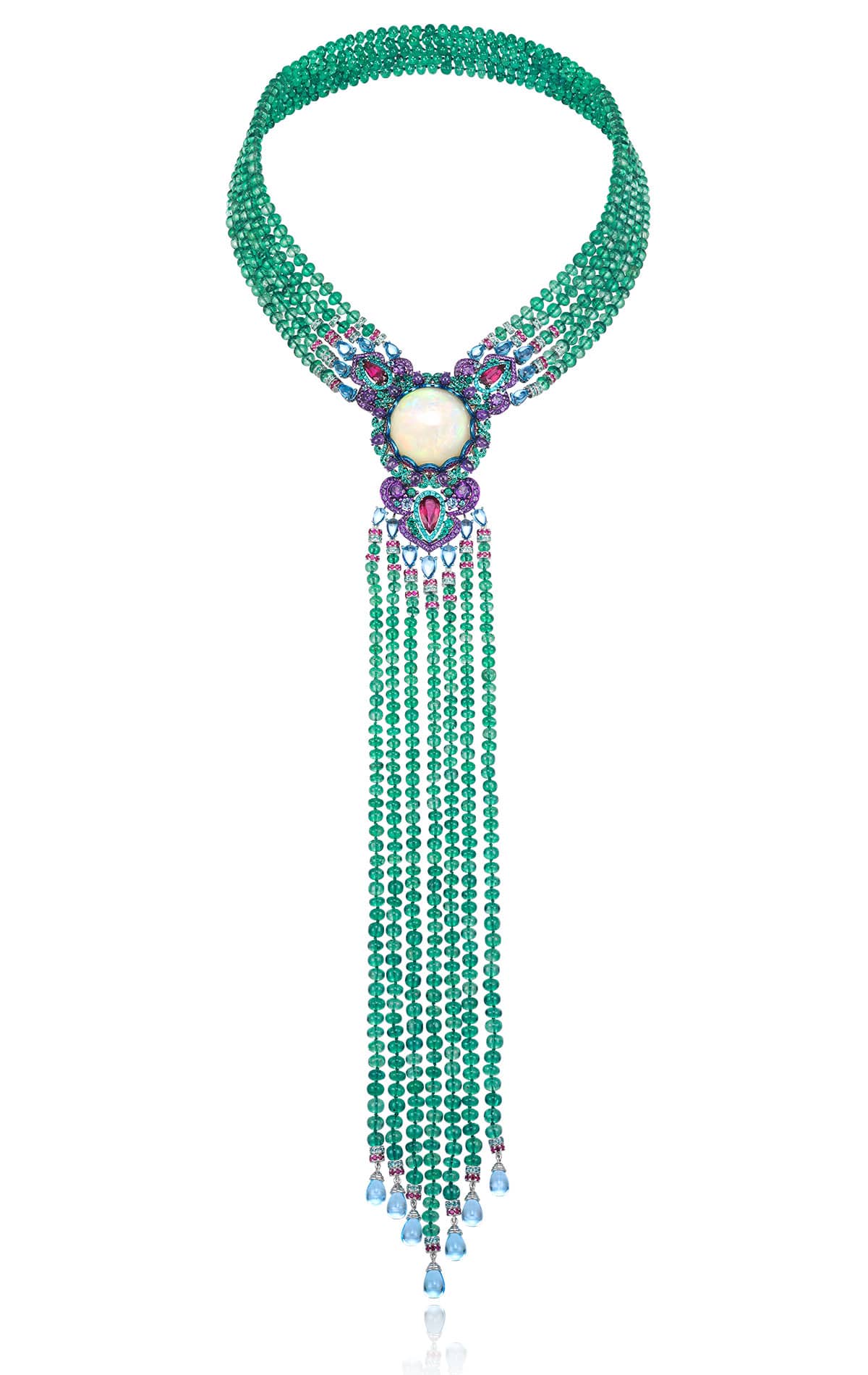
Chopard
Chopard
High Jewellery necklace featuring a 29.84-ct cabochon opal, topaz, emerald beads, amethyst, ruby, rubellite, tourmaline (3.90ct) and blue sapphires from The Red Carpet collection
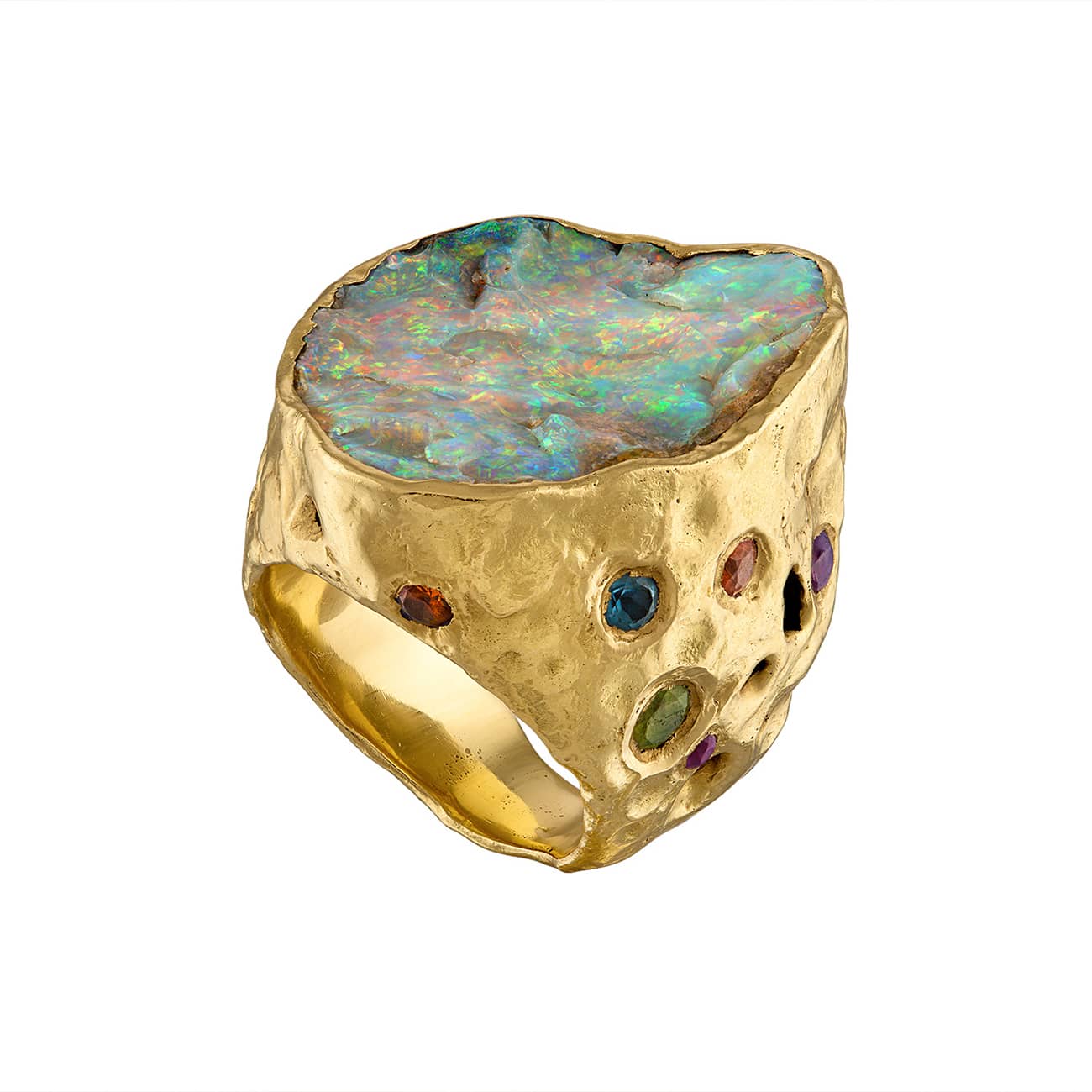
Dale Novick
Dale Novick
Opal and coloured sapphire ring
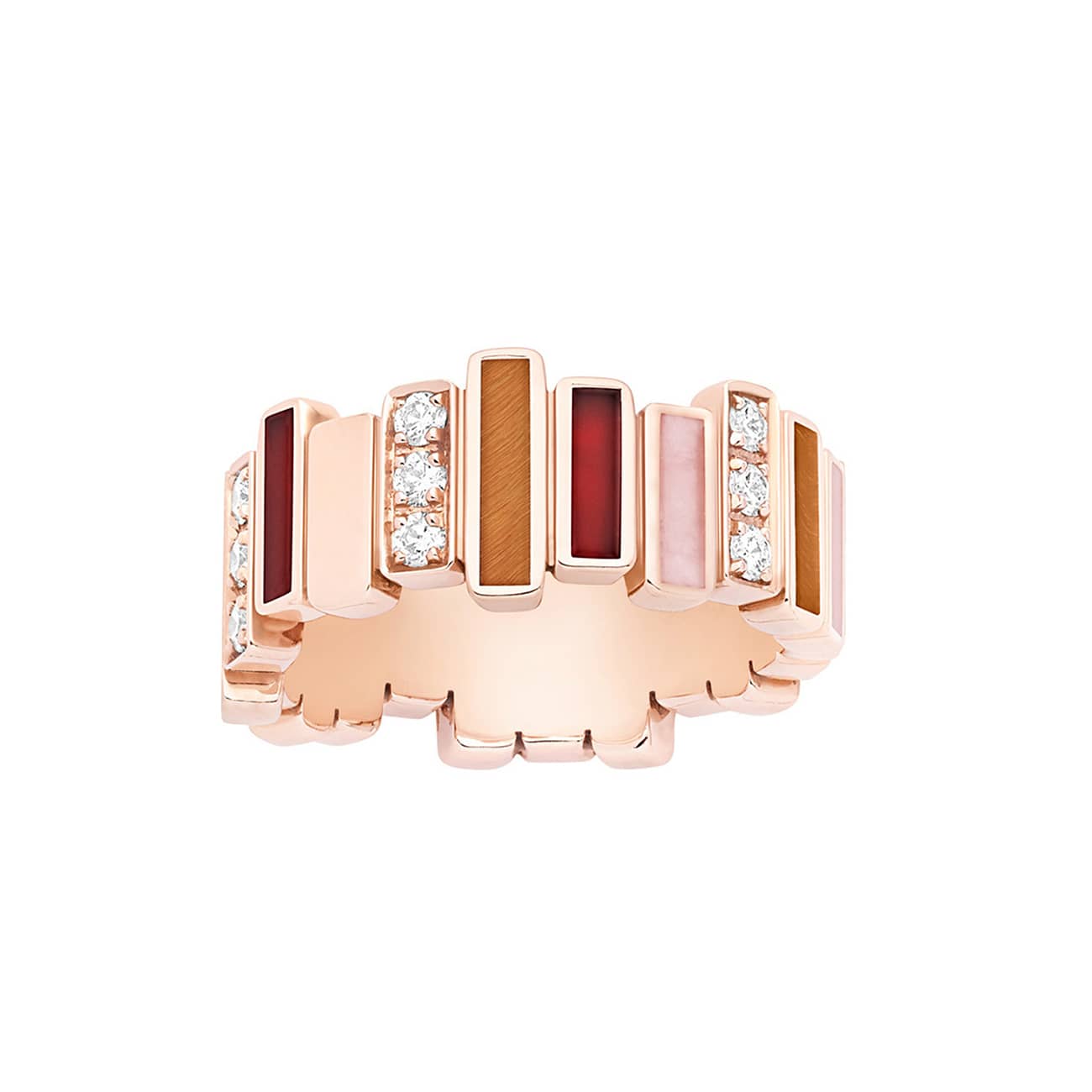
Dior
Dior
GEM DIOR ring in pink opal, tiger's eye and carnelian
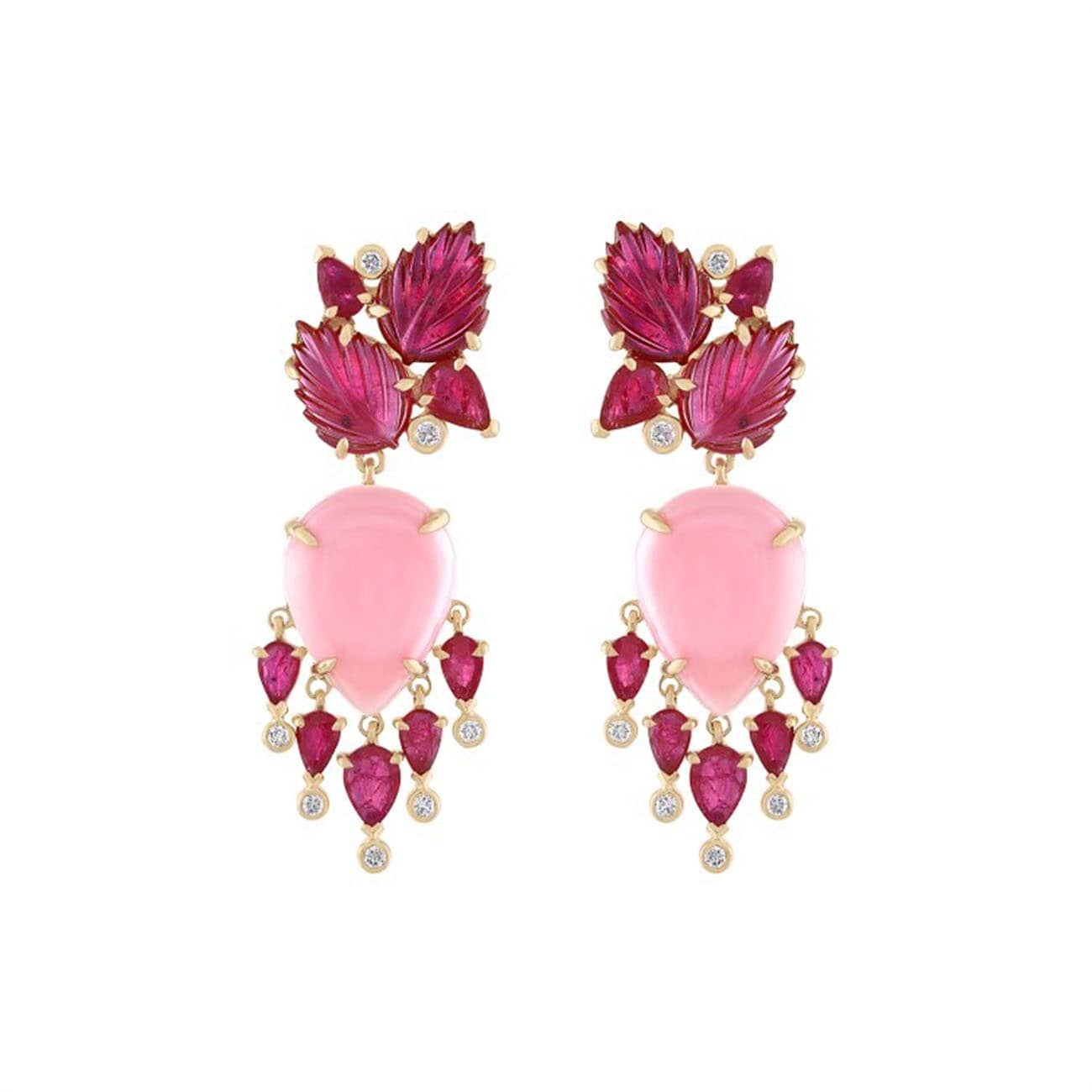
Eden Presley
Eden Presley
Pink opal, carved ruby and diamond earrings from the Rock collection
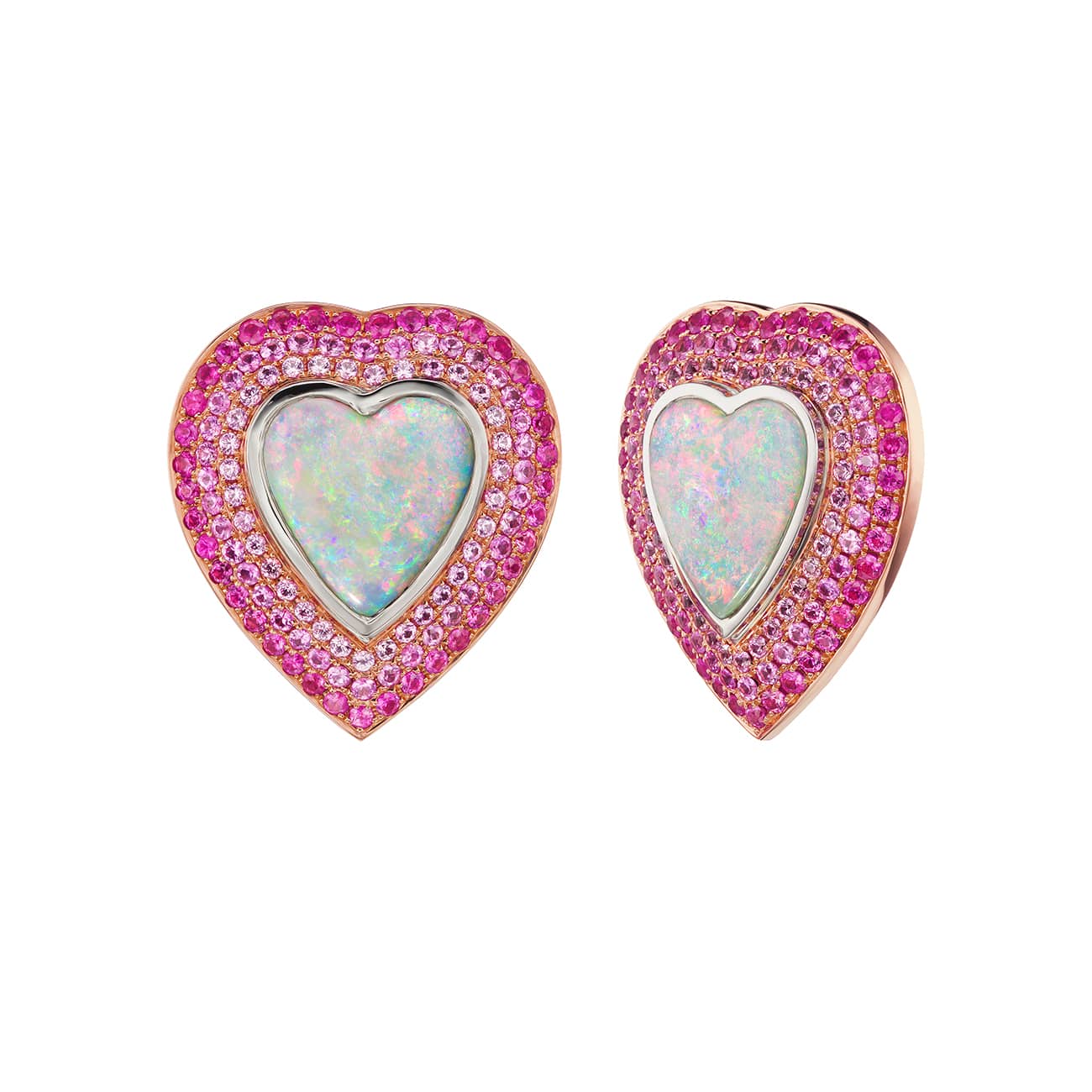
Emily P. Wheeler
Emily P. Wheeler
One of a kind Odette II Studs in australian opal and pink sapphire
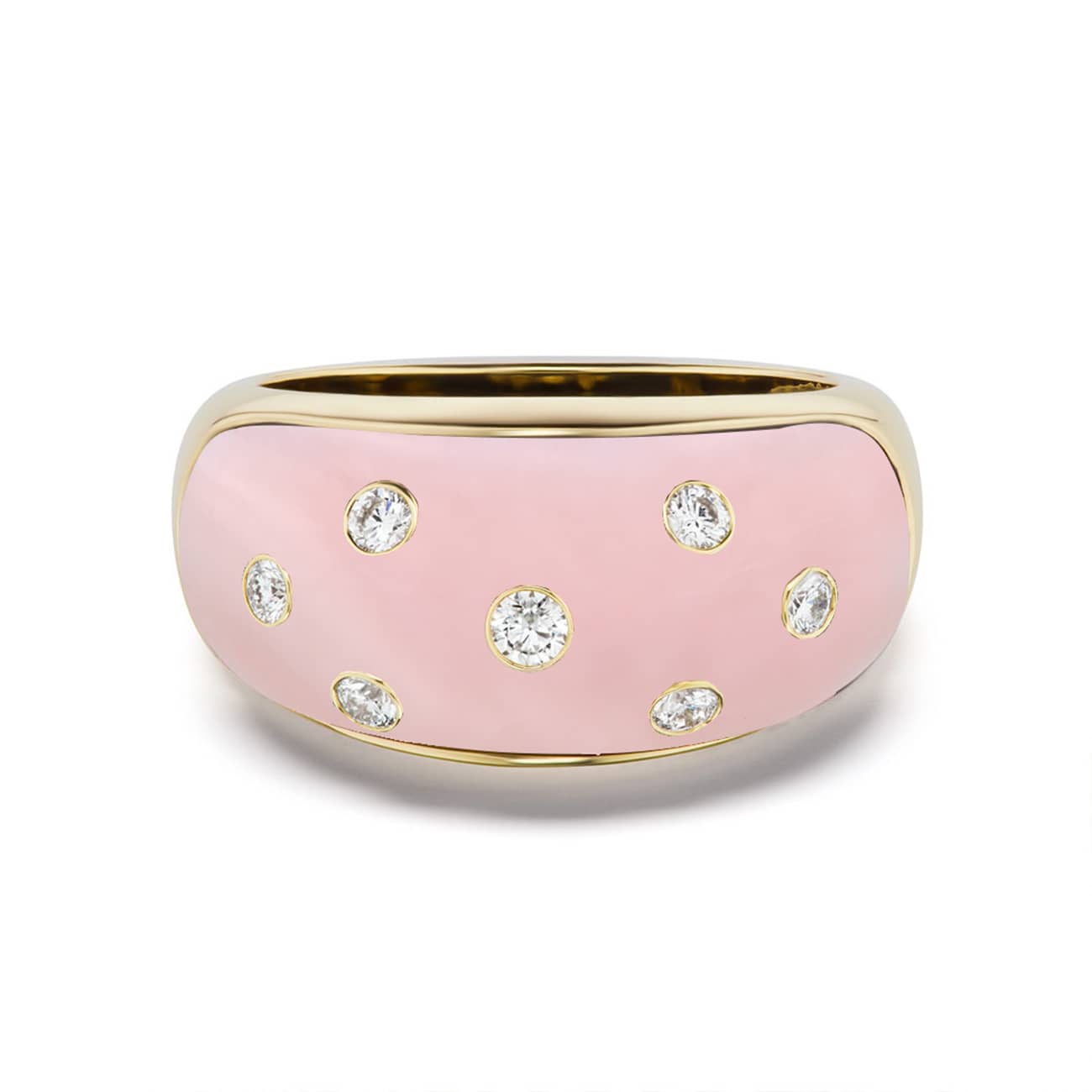
Gemella
Gemella
BomBae pink opal and diamond ring
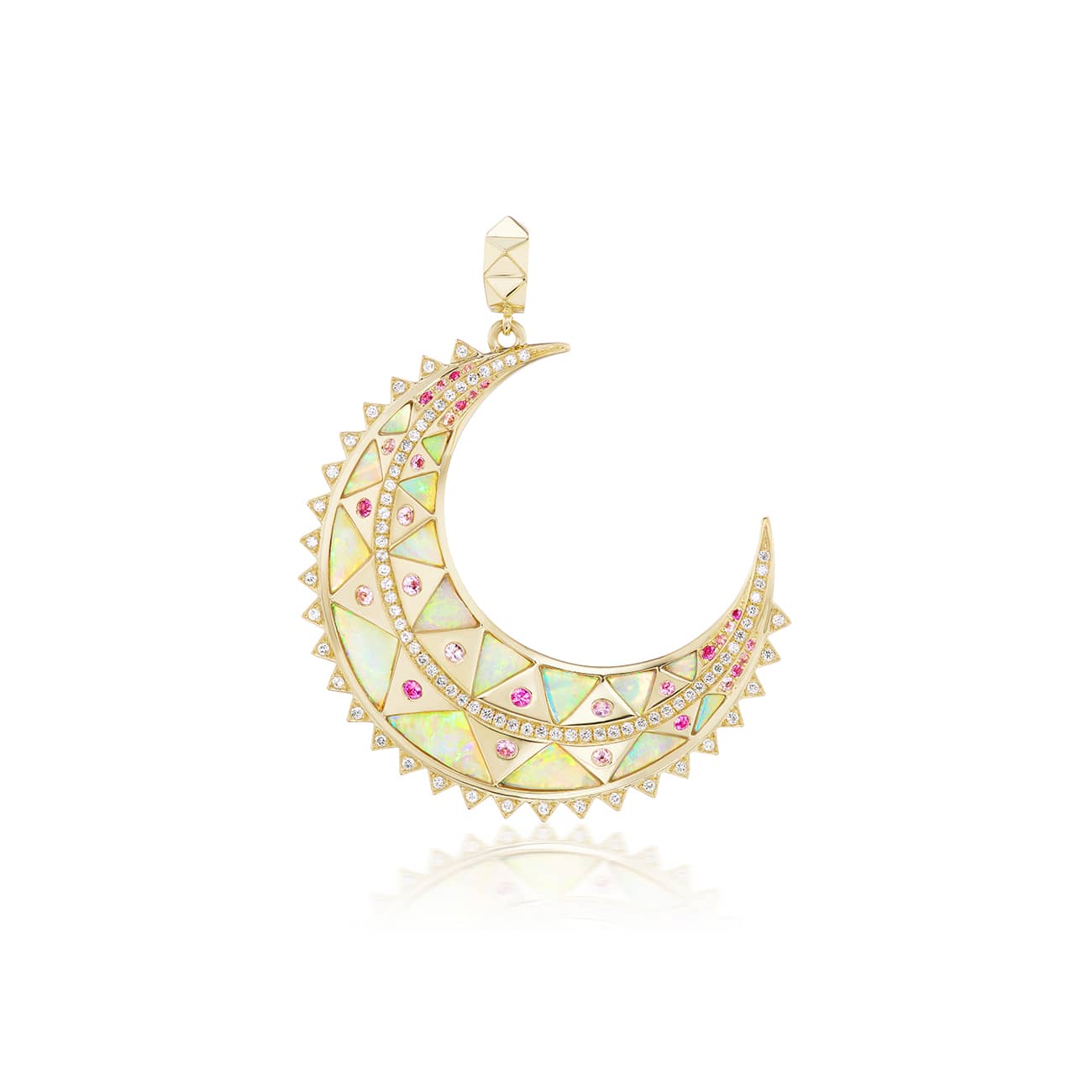
Harwell Godfrey
Harwell Godfrey
Major Moon in white opal, pink sapphire pendant
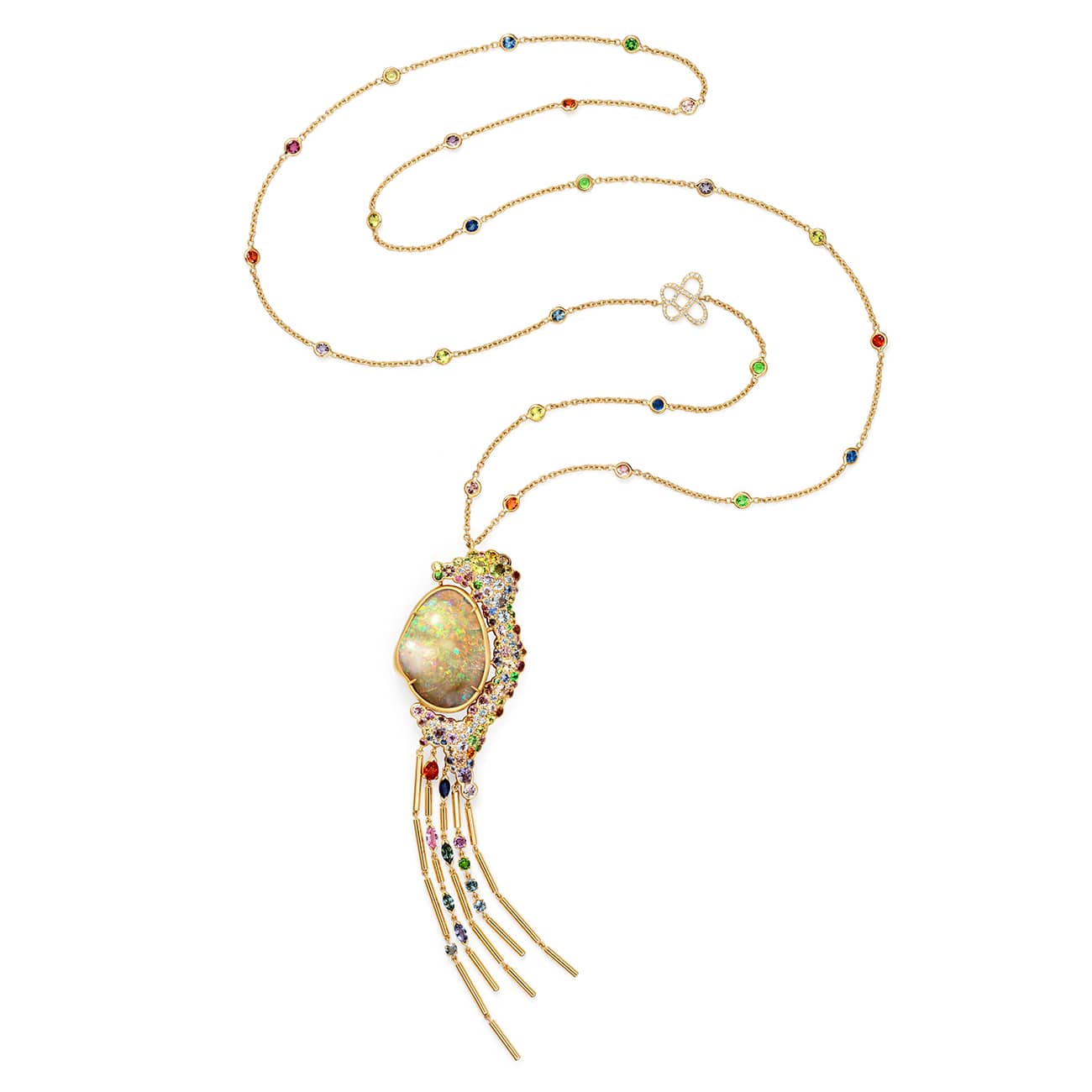
K&Co
K&Co
Aurelia Aurita Sautoir necklace featuring an incredibly rare opalised clam shell, multi-coloured sapphires, tsavorites and spessartite garnets
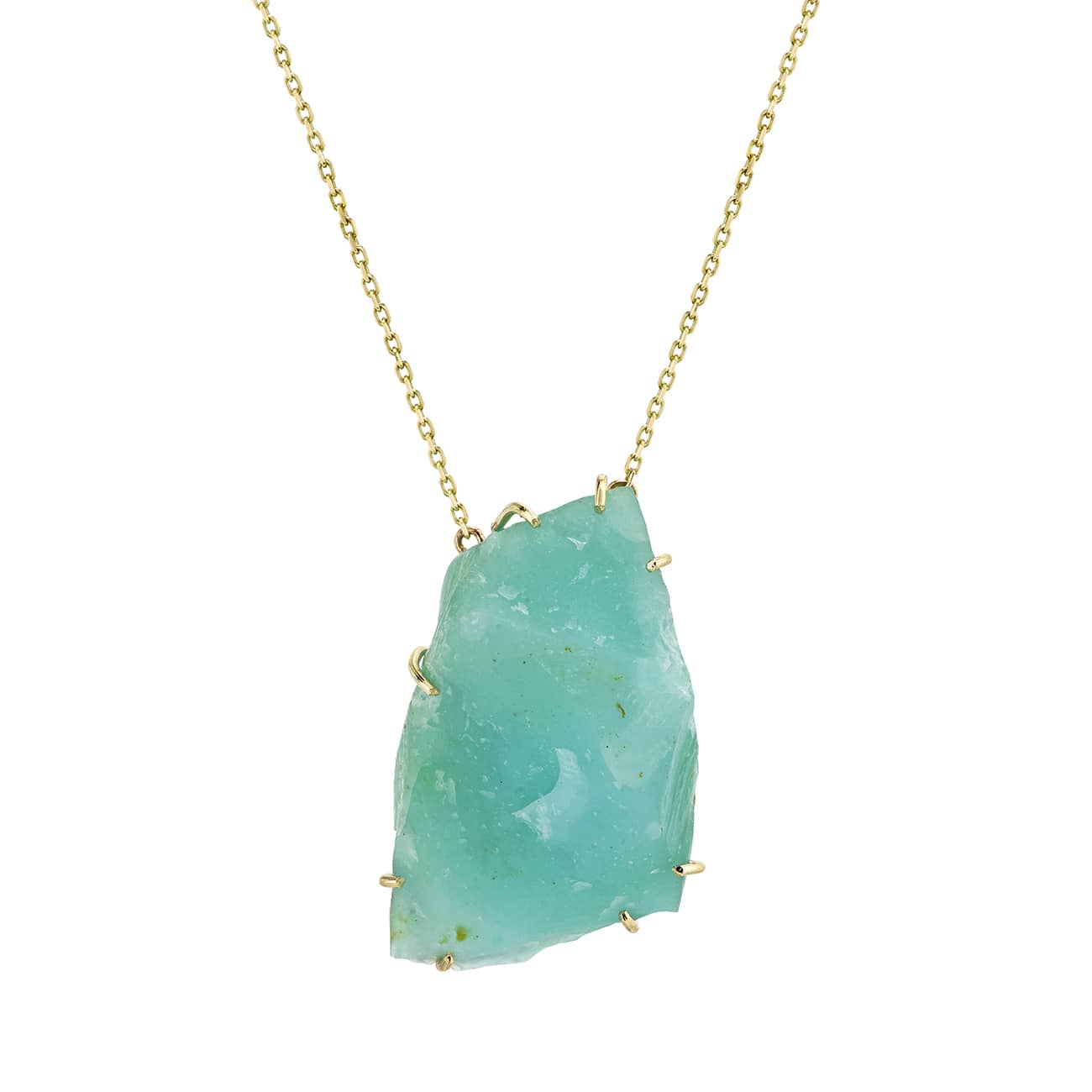
Karma El Khalil
Karma El Khalil
Paraiba Opal Pendant necklace from the Rock Hall III collection
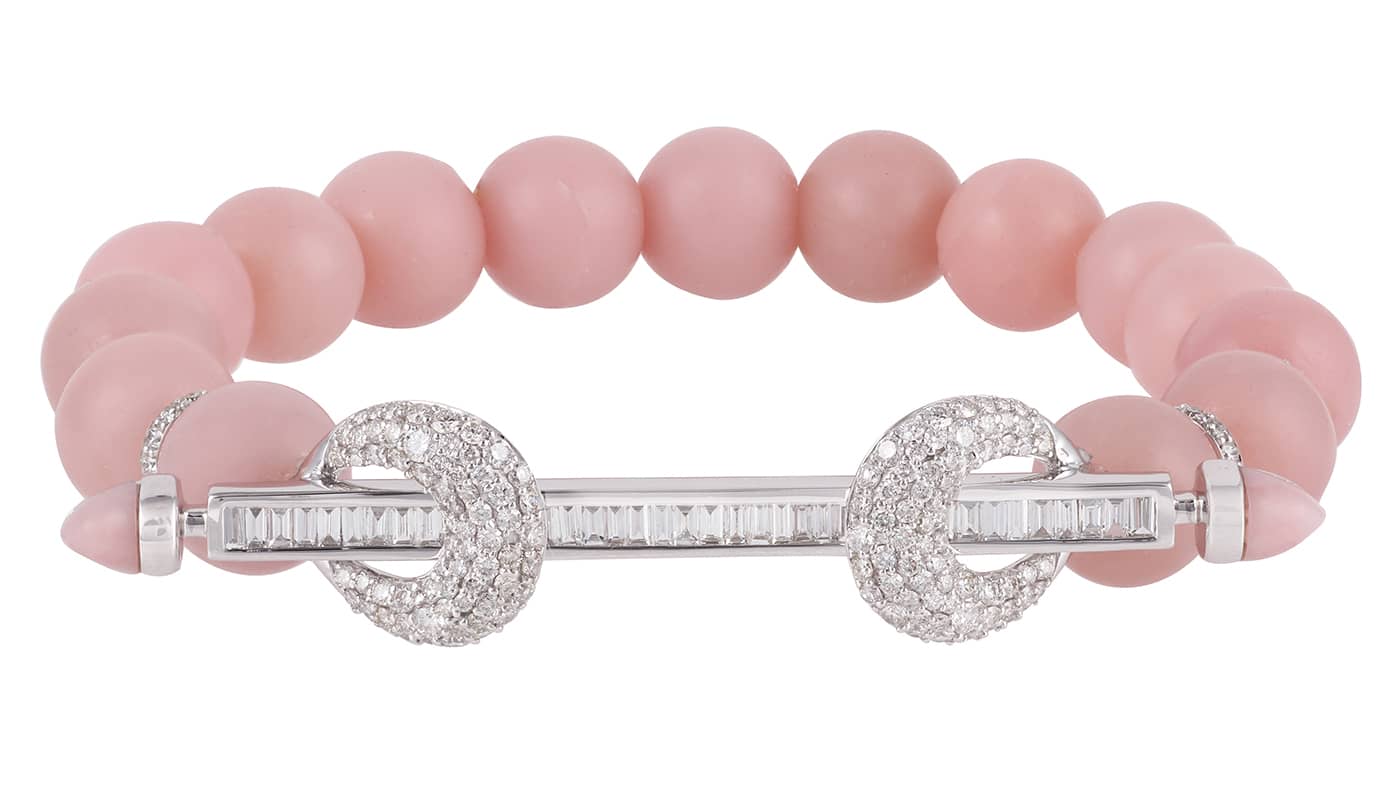
ANANYA
ANANYA
Chakra bracelet in pink opal and diamond from the Chakra collection

WORDS
Katerina Perez is a jewellery insider, journalist and brand consultant with more than 15 years’ experience in the jewellery sector. Paris-based, Katerina has worked as a freelance journalist and content editor since 2011, writing articles for international publications. To share her jewellery knowledge and expertise, Katerina founded this website and launched her @katerina_perez Instagram in 2013.
